 Previous Day |
Homestead, FL → Flamingo, FL → Homestead, FL 94.9 mi (152.7 km) |
 Next Day |
Happy Solstice, everyone!
You wouldn’t think it’s the shortest day of winter in the midst of tropical Florida, but here I am, ready to maximize every hour of Solstice in the wet and wild landscape of the Sunshine State’s most famous national park! While I took a deep dive into Biscayne National Park yesterday, today’s waters are a little less deep but a lot more dangerous! That’s because Everglades National Park is the only place in the world inhabited by both alligators and crocodiles, and I was planning to get right in the water with them!
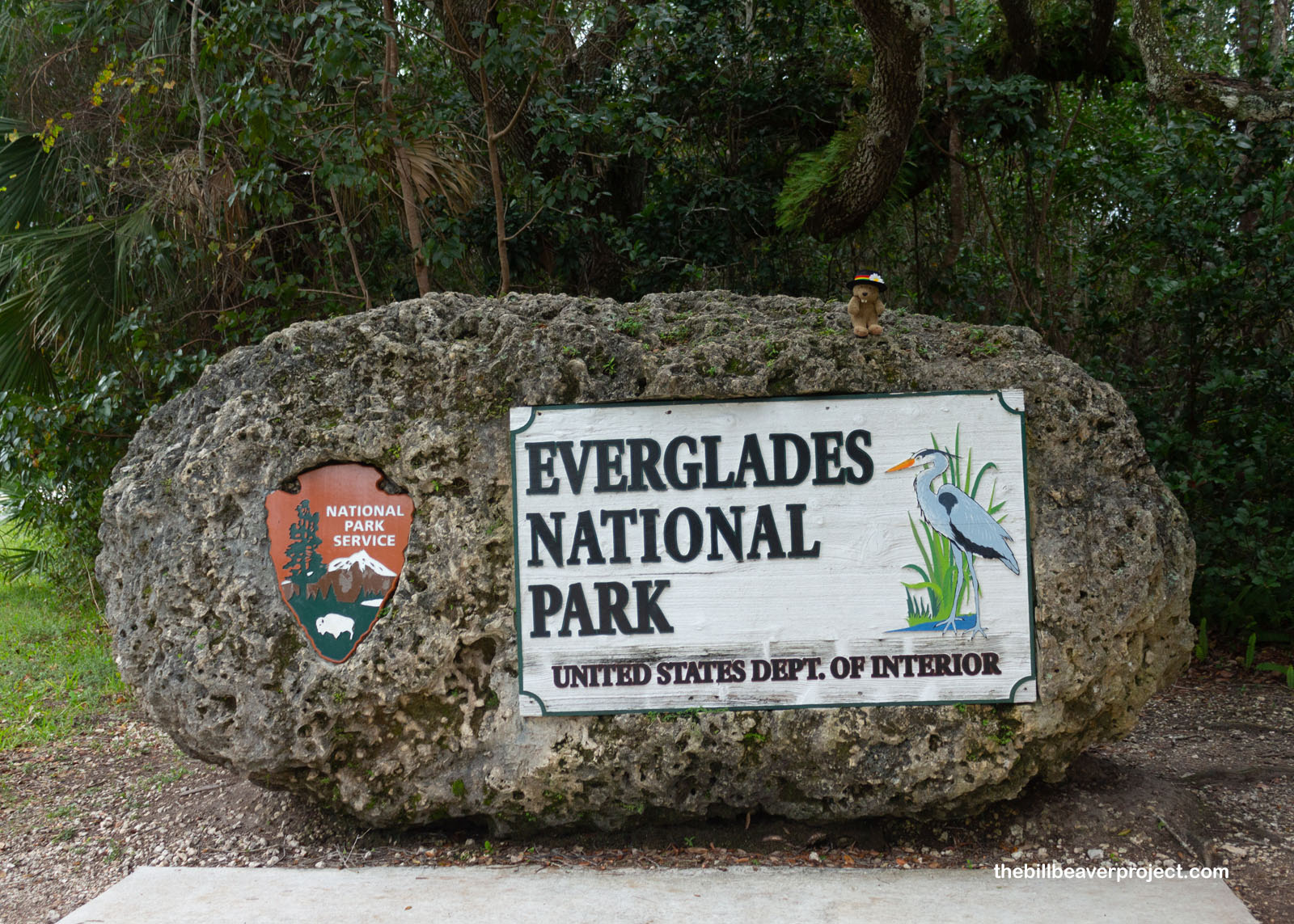 |
I’d made a 10:00 reservation for the Everglades Immersion: Cypress Wet Walk tour, leaving from the Ernest F. Coe Visitor Center, but being Solstice, I didn’t want to waste any hour between sunrise and 10, especially with these ominous looking clouds overhead! So I bypassed that visitor center for the next: Royal Palm, formerly the state park that would become the national one! From here, I was going to explore one of the park’s more famous boardwalks!
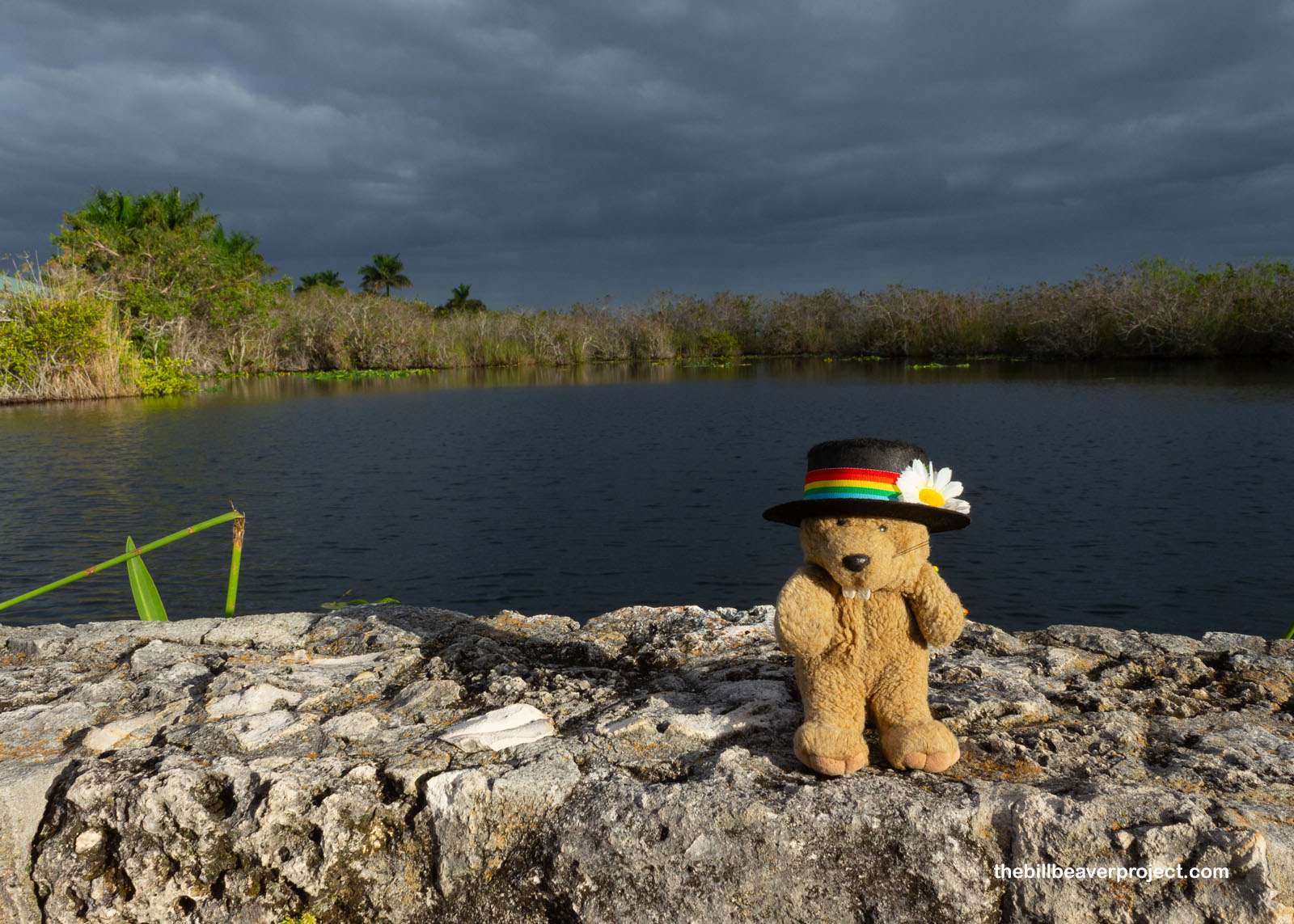 |
First though, a safety check! As a bite-sized morsel for any crocodilian, I’d need to maintain my distance. Humans should stay at least 15 feet away and definitely back off if a gator hisses. Alligators don’t usually think of humans as food—it’s usually a case of mistaken identity—but I’m 100% certain they’d look at me as a snack! And holy Toledo, my first alligator was just hanging out right next to the path! Good thing it was early, and this one was lazily sunning itself, or I might have been in trouble!
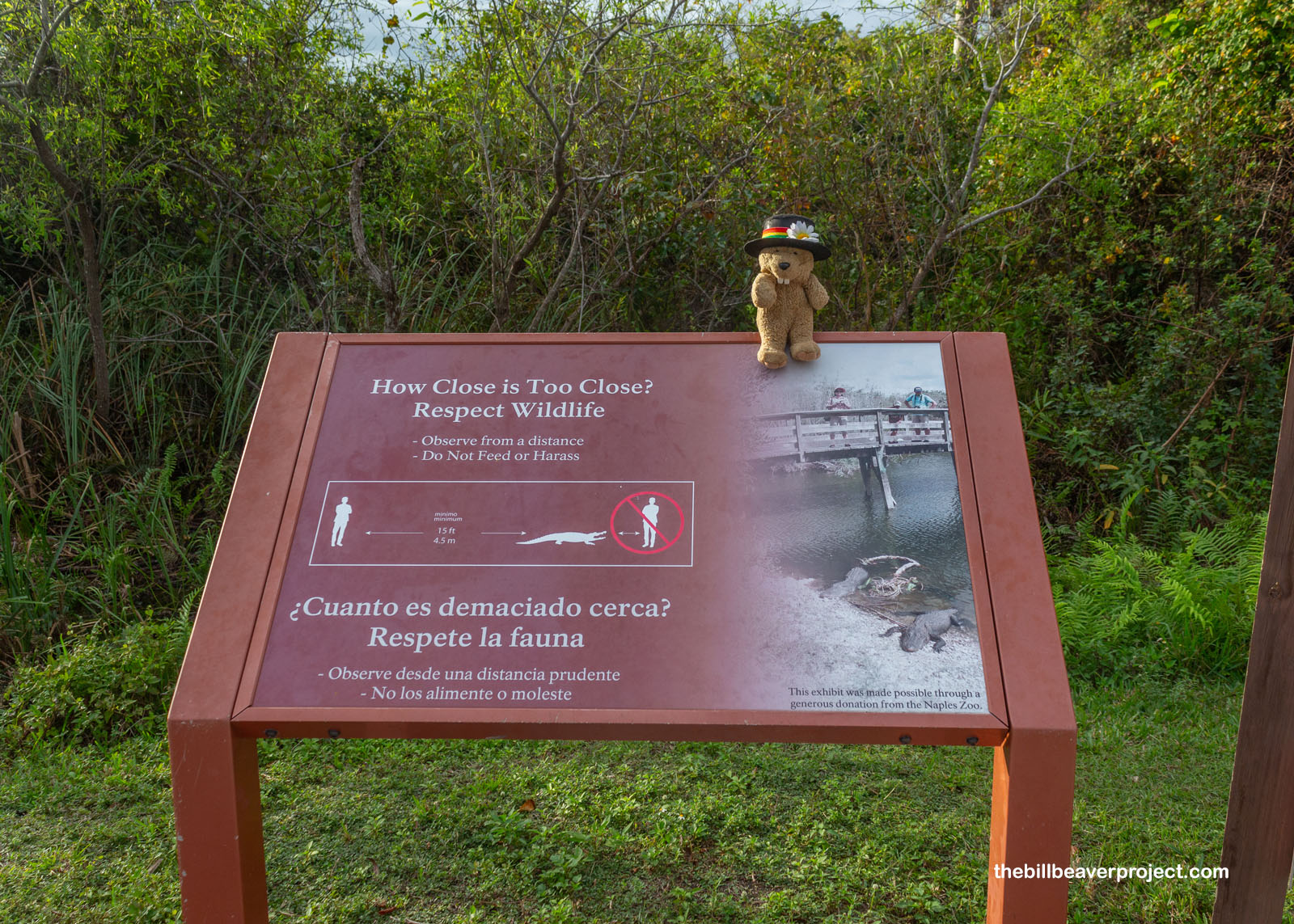 |
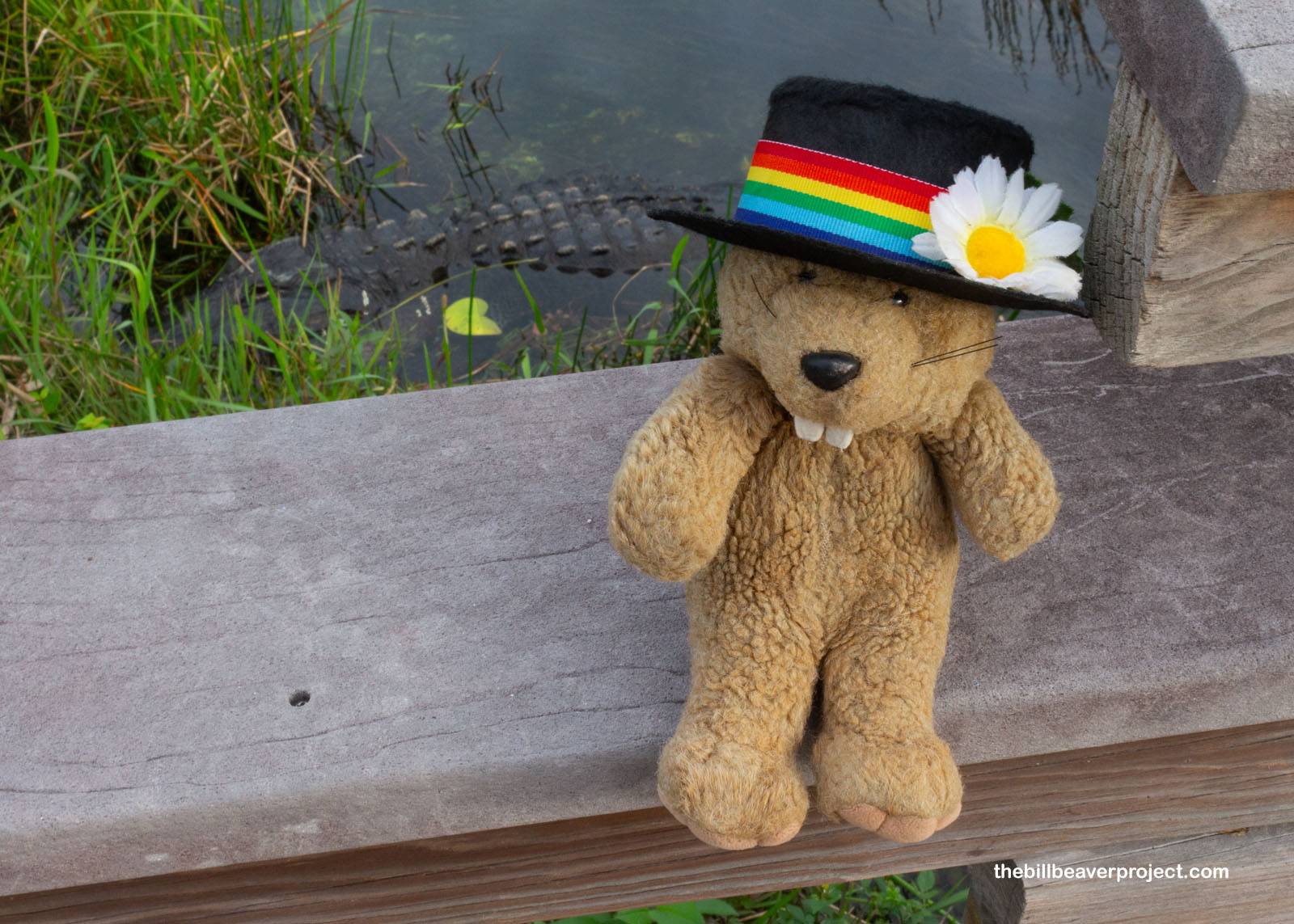 |
But this trail gets its name from a whole different kind of critter: the anhinga! This diving bird congregates here at Taylor Slough because the water here is deep enough for them to dive for food, and I was ready to dive in and see a few!
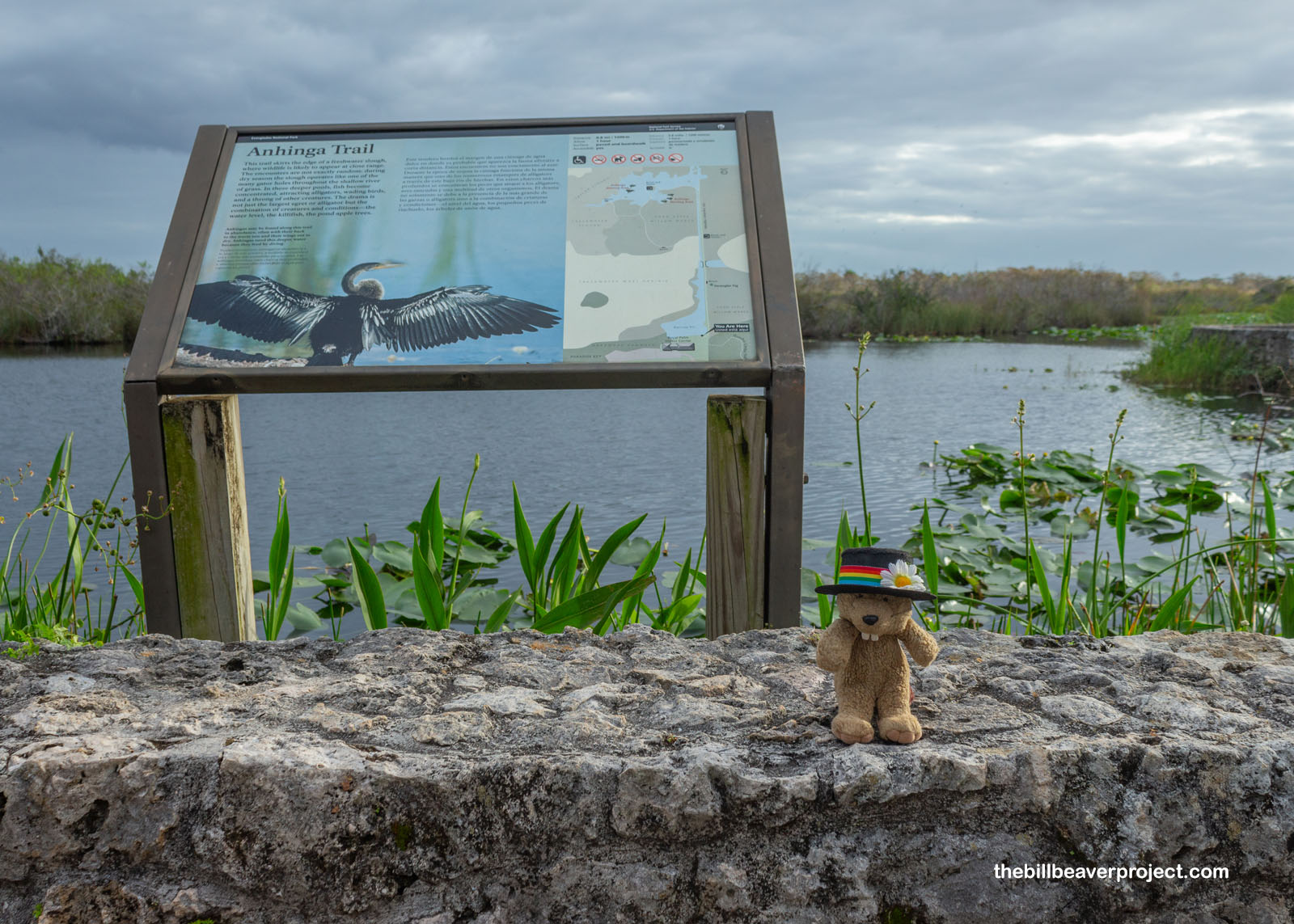 |
For as un-pretty a name as “slough” is, the water along either side of the boardwalk was crystal clear, and I could see way down to the base of the lily pads! This was not what I expected from the Everglades, which I always thought were mucky like a swamp. I made a note to ask my guide when I started the Wet Walk!
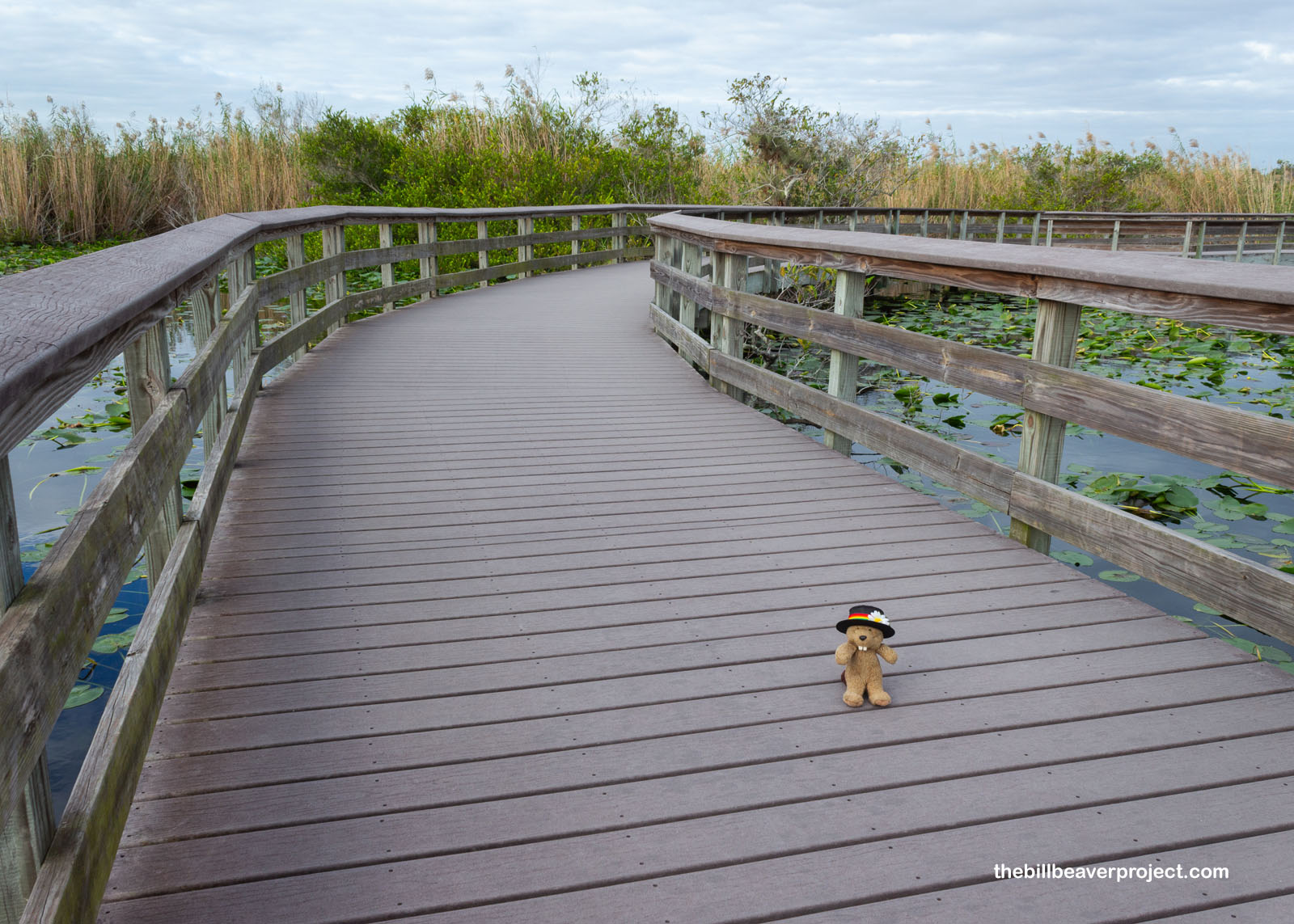 |
Looking back the way I came, I found a sign talking about hammocks, which are not the kind you snooze in but rather higher ground in the middle of a wetland! The Paradise Key Hammock, where the visitor center is now, is home to the royal palms that gave the early state park its name. It was because of unchecked development of the wetlands, and uncontrolled wildfires scorching the hammock, that this national park was established in 1947!
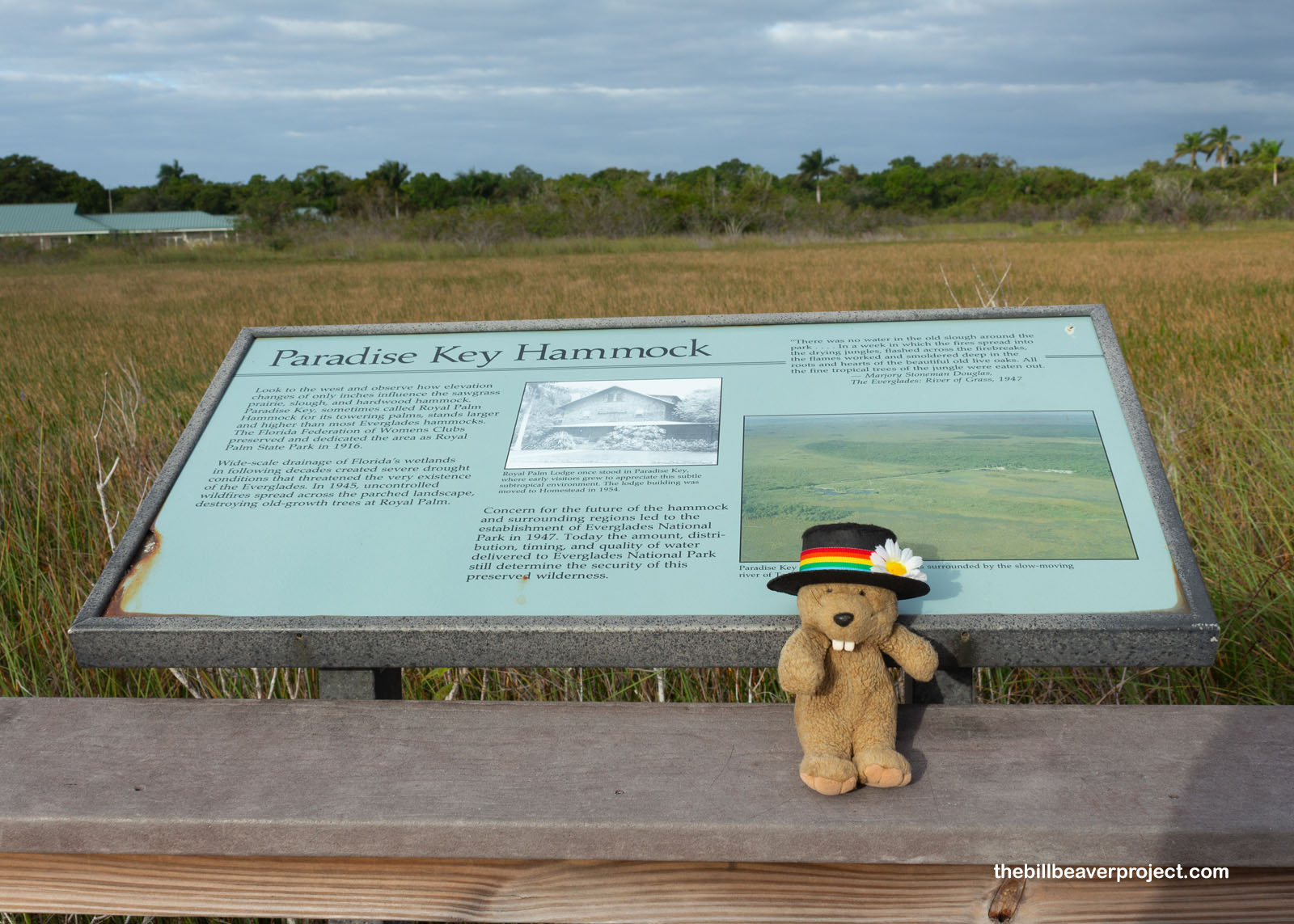 |
The Anhinga Trail was not a long one, but it did live up to its name! Behold! I spotted a pair of anhingas sunning themselves on a tree branch. They’re unusual birds for sure! Their feathers aren’t waterproof like a duck’s, which helps them dive but also makes them lose heat very fast. For this reason, they have to spend long hours sunning themselves on branches to dry off and warm up. They’ve also got no nostrils at all! These mouth breathers use their beaks to spear fish, which they have to swallow quickly at the surface so they can take a breath again!
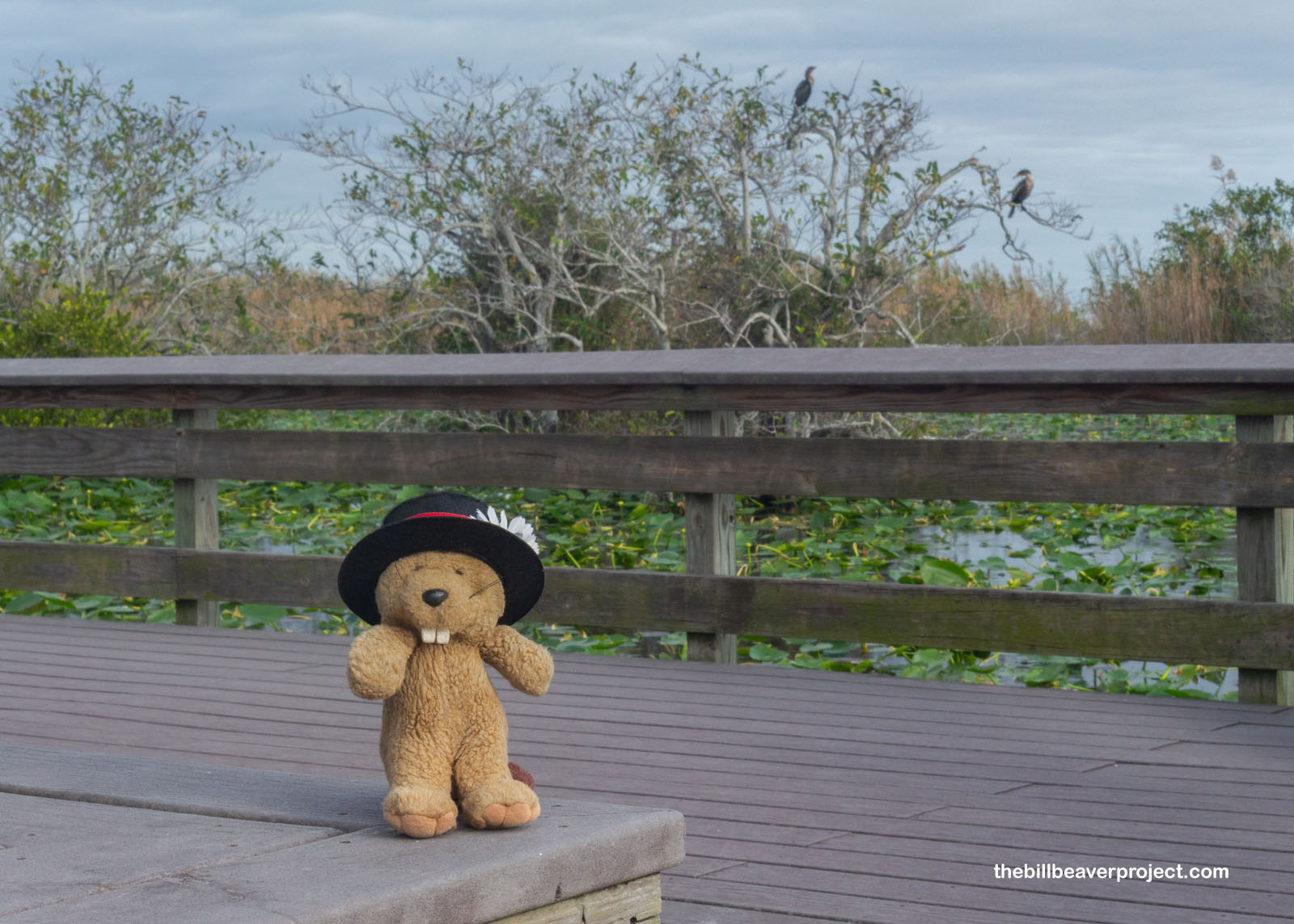 |
I thought the Anhinga Trail would take longer than it did, so by the time I returned to the visitor center parking lot, there was still time to walk another 0.4-mile nature trail with a fun name: the Gumbo-Limbo Trail!
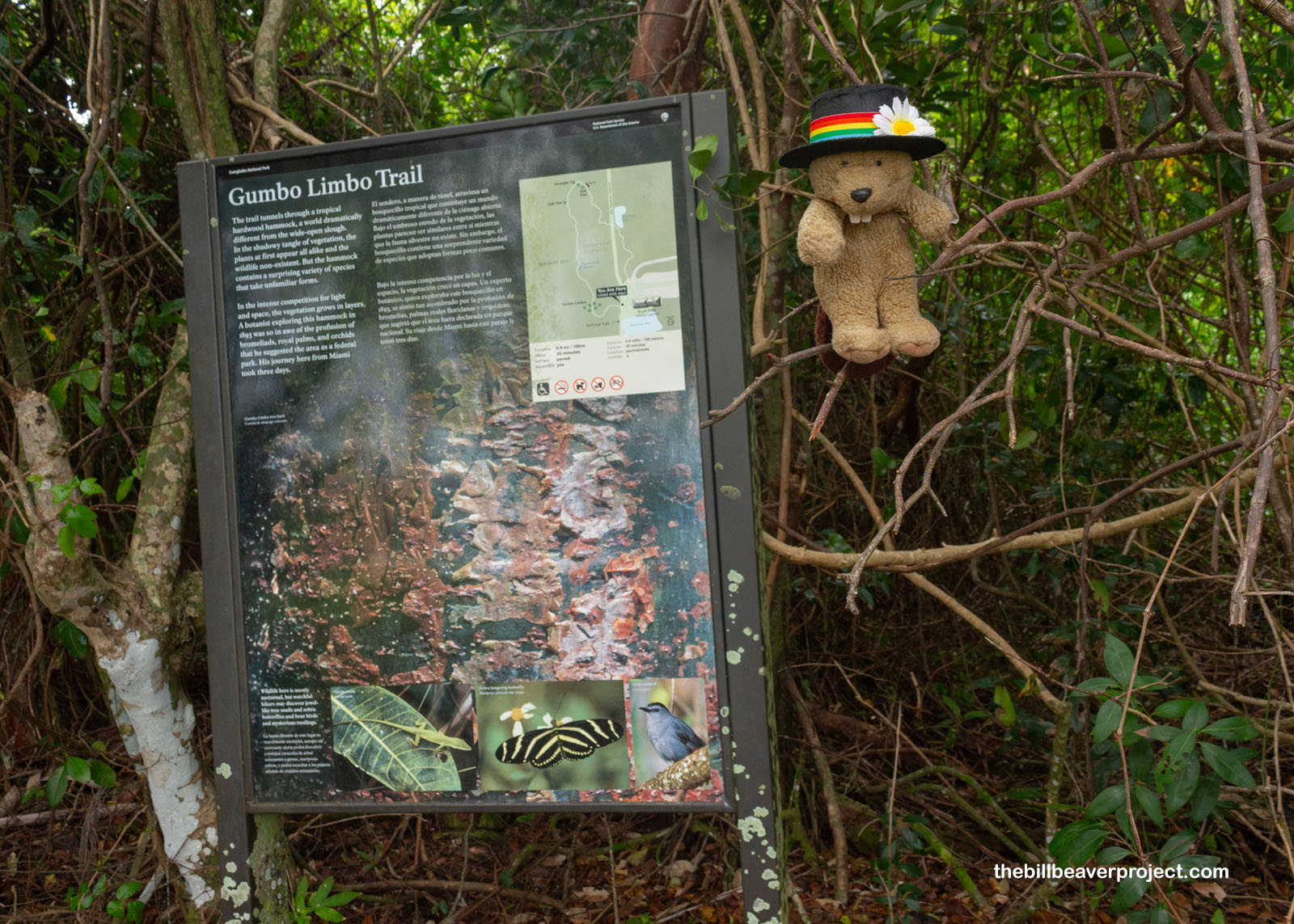 |
This trail circled through the hardwood hammock environment, a dense thicket where ferns, bromeliads, and of course, the namesake, red-barked, gumbo-limbo tree, all compete with each other for light!
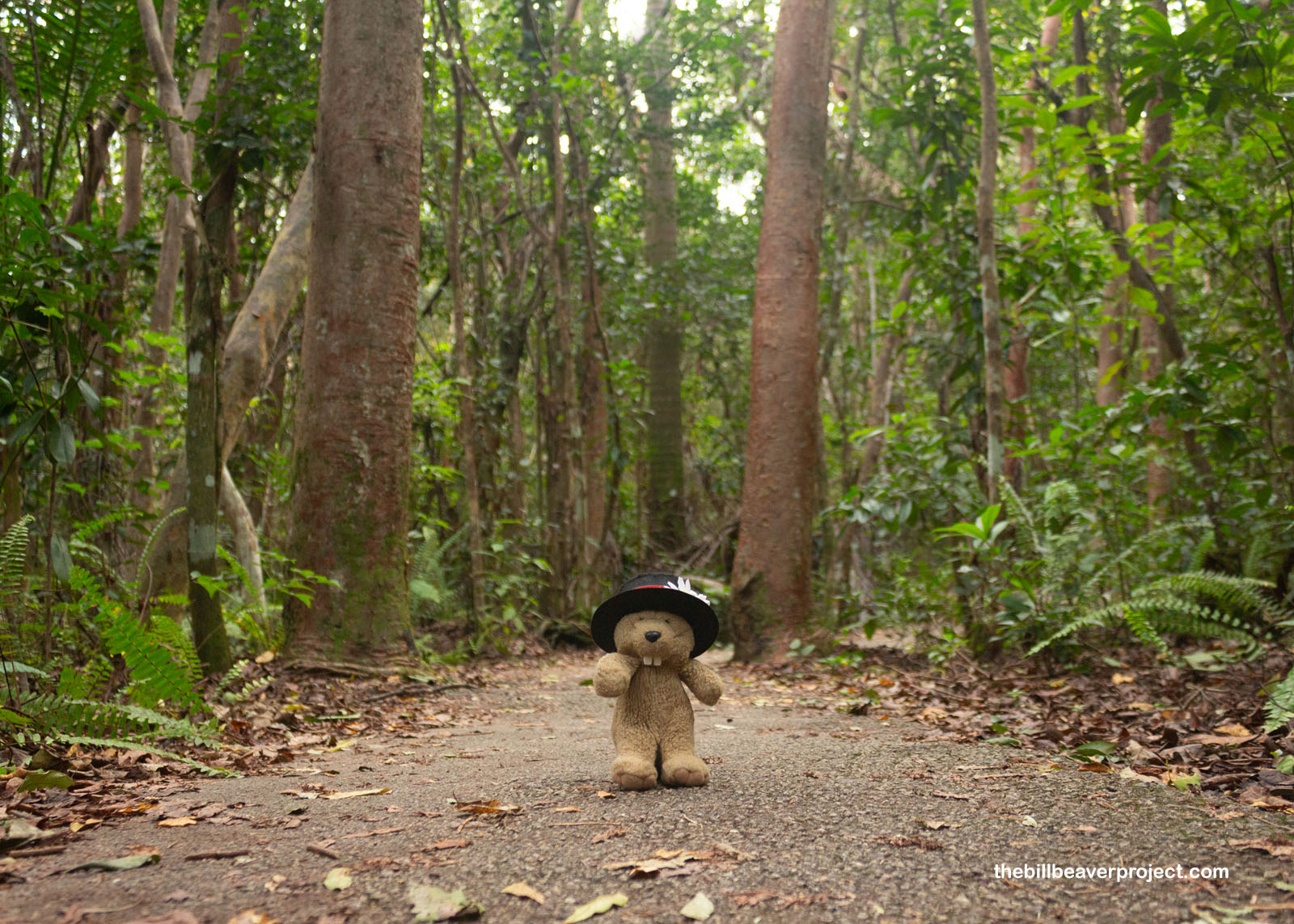 |
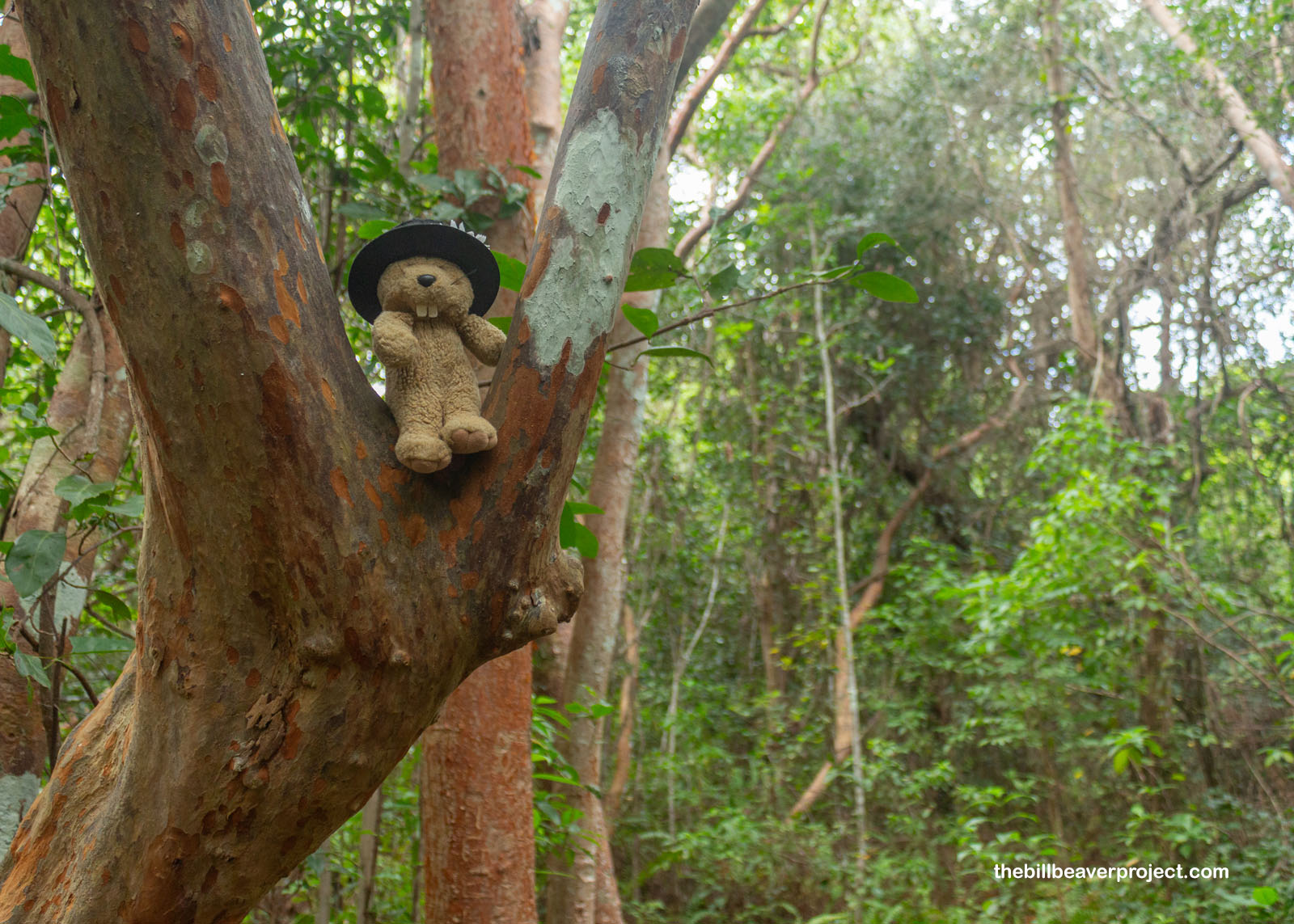 |
And the gumbo-limbo tree (Bursera simaruba) is a super neat one! It’s been used for ages as a source of medicinal salves, waterproofing for canoes, and maybe even the flavor of the original chicken gumbo! Plus these hardwood trees are uniquely resilient. When knocked over in a hurricane, the limbs are quick to take root and start growing again! For this reason, lots of folks have used gumbo-limbo trees to build living fences!
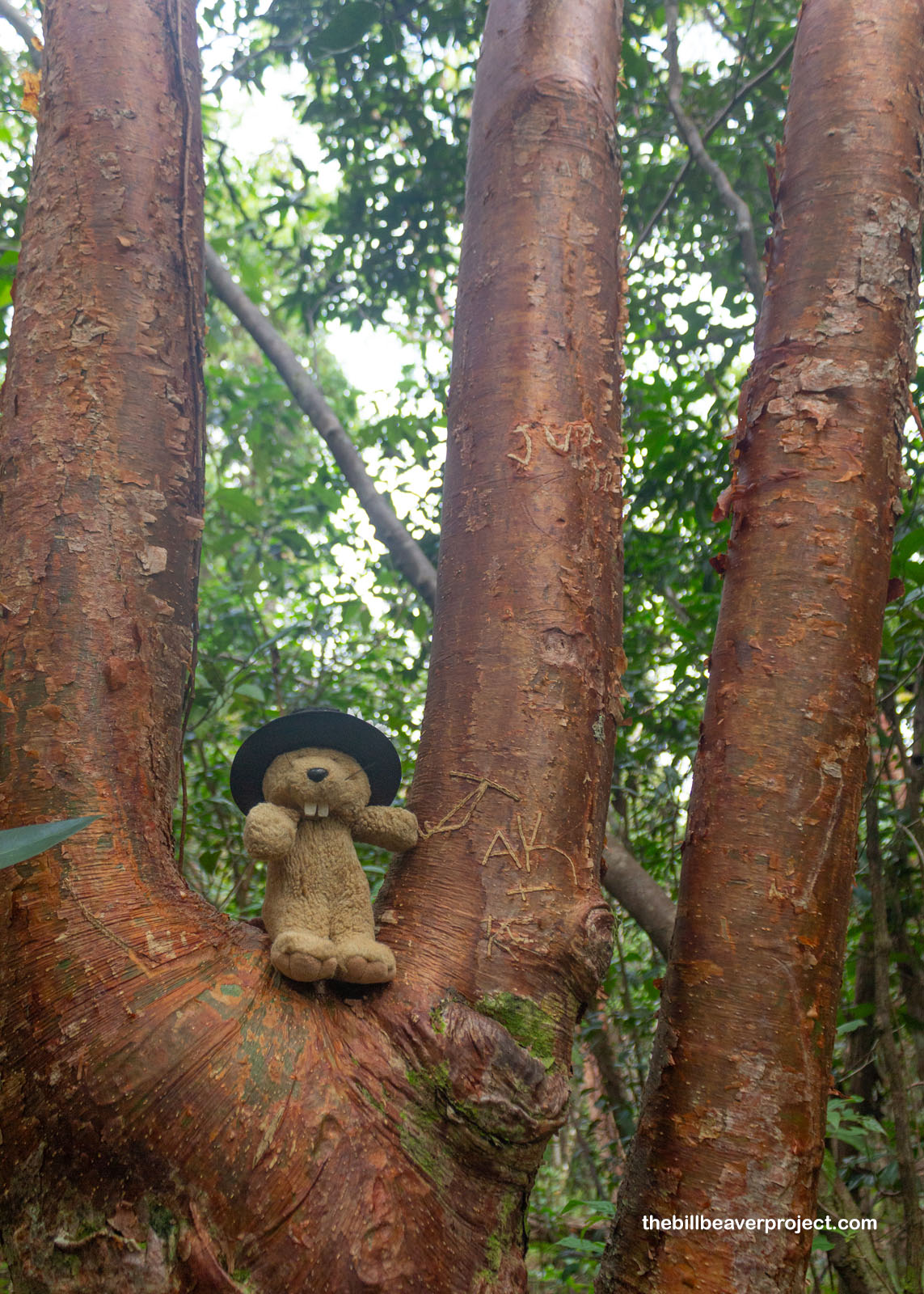 |
Fences weren’t on the mind of developers in the early 1910s; they were set to road building! Before this was a national park, folks wanted to control the water so they could build on the hammock, carving the canal-lined Ingraham Highway from Homestead to Flamingo between 1915 and 1922. Unpaved, this road didn’t stand a chance against the wet Floridian climate, and after this became a national park, the road was relocated to higher ground!
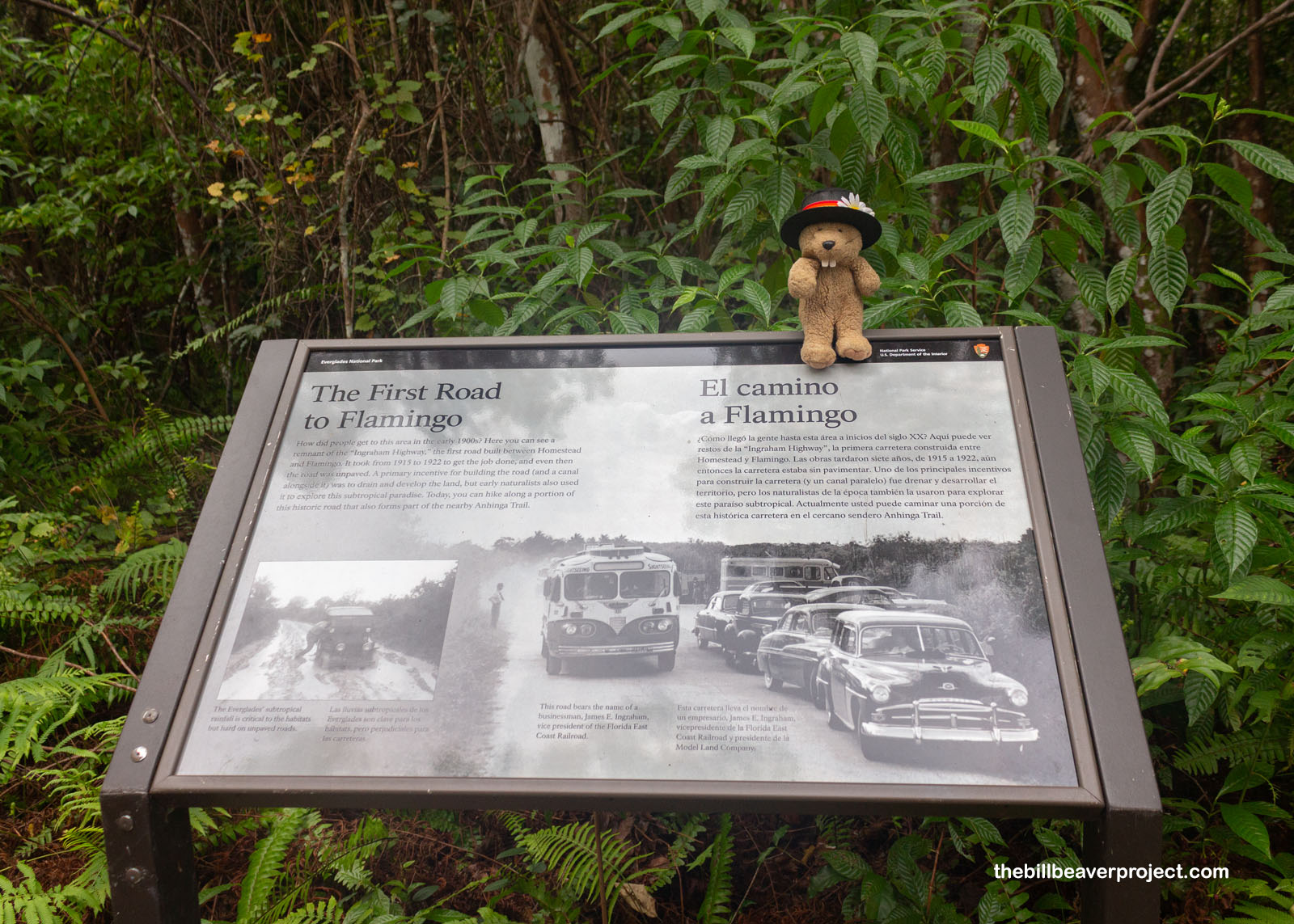 |
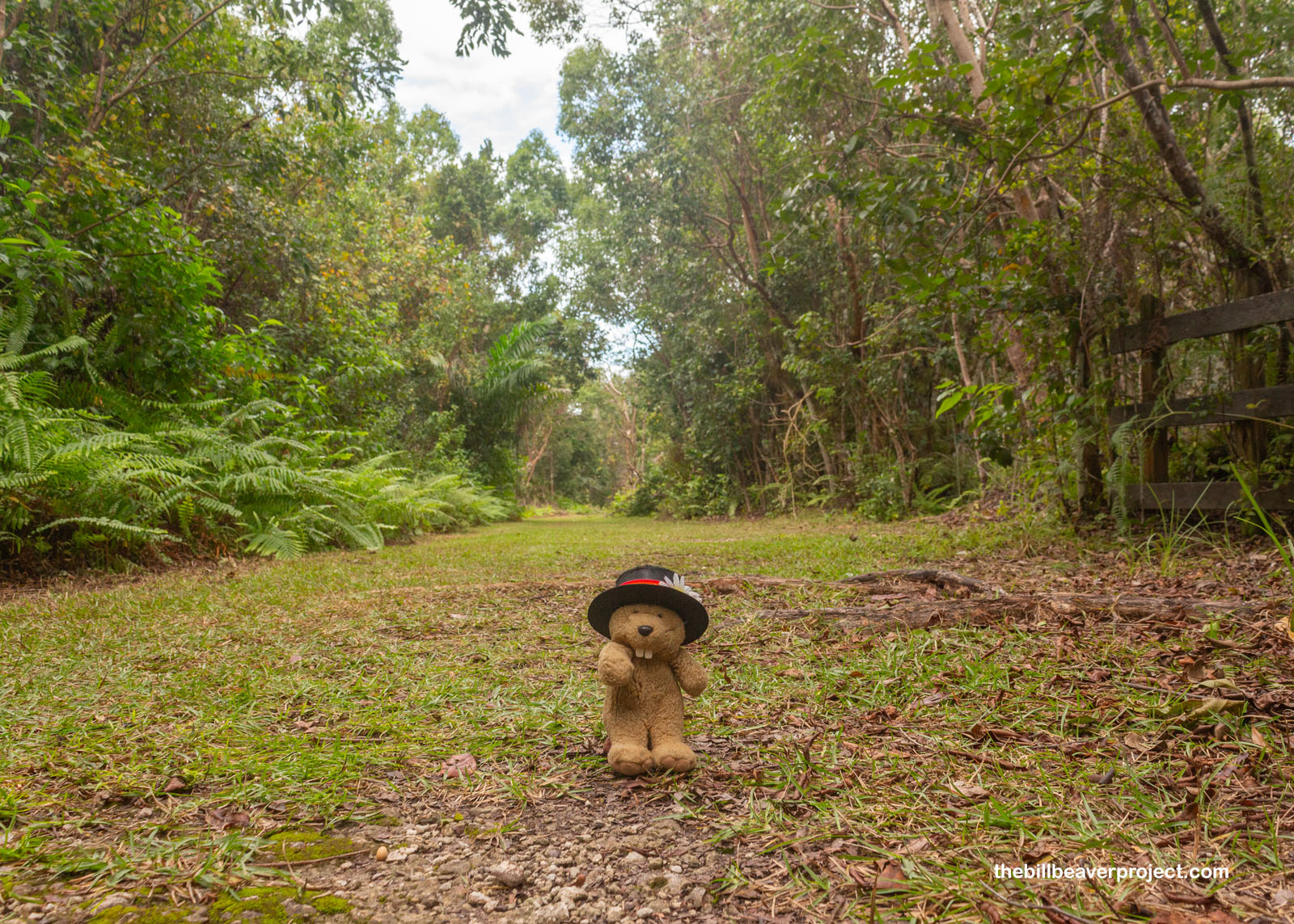 |
Completing my circuit of the Gumbo-Limbo Trail, I headed for the Ernest F. Coe Visitor Center to check in for my 10:00 slog! At the entrance stood a monument to the Florida panther, state animal of the Sunshine State! These elusive swamp cats are the only kind of cougar still found in the eastern USA, and in 1970, there were only 20 of them left in the wild! Today, there are just over a hundred, but the threats have never been greater, with habitat loss, collisions with cars, and mercury poisoning taking their tolls! I wondered how lucky someone would have to be to see one in the wild (from a safe distance, of course)!
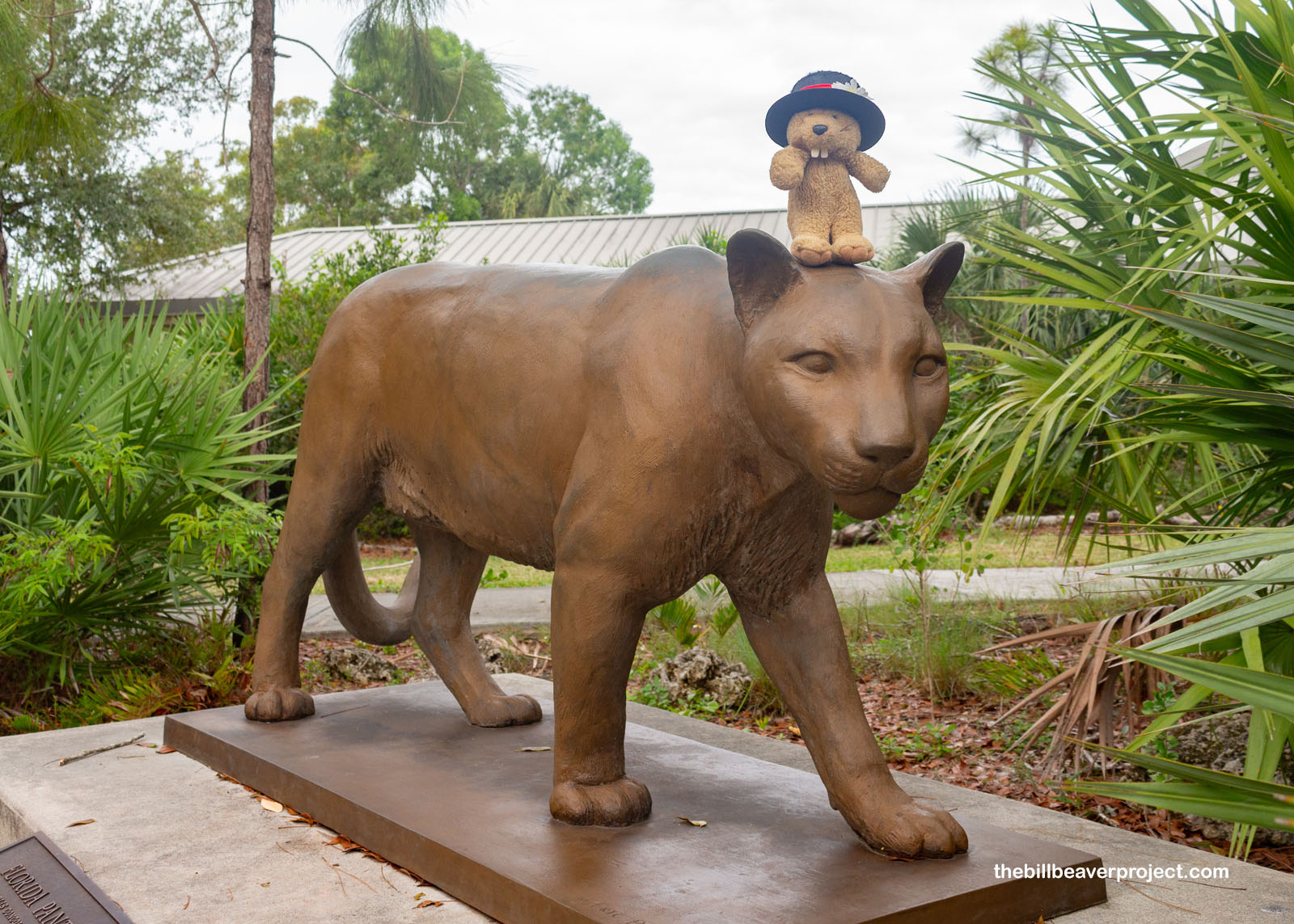 |
At 10:00 sharp, I met my guide, whose name was George! I felt bad because it was Solstice, and I hadn’t thought much lately about my brother, George, who set off this whole adventure to begin with, but Guide George was rip-roaring and ready to show me some really cool stuff on what turned out to be a private tour. Together, we traveled a few miles from the visitor center, parked on the side of Pa-hay-okee Road, and stepped right in! The water was chilly, so I stayed on my flamingo tube and paddled after George. As he explained right away, this water’s crystal clear, not swampy, because the Everglades are actually a huge limestone-filtered river that flows from the Orlando area to the bottom of the state!
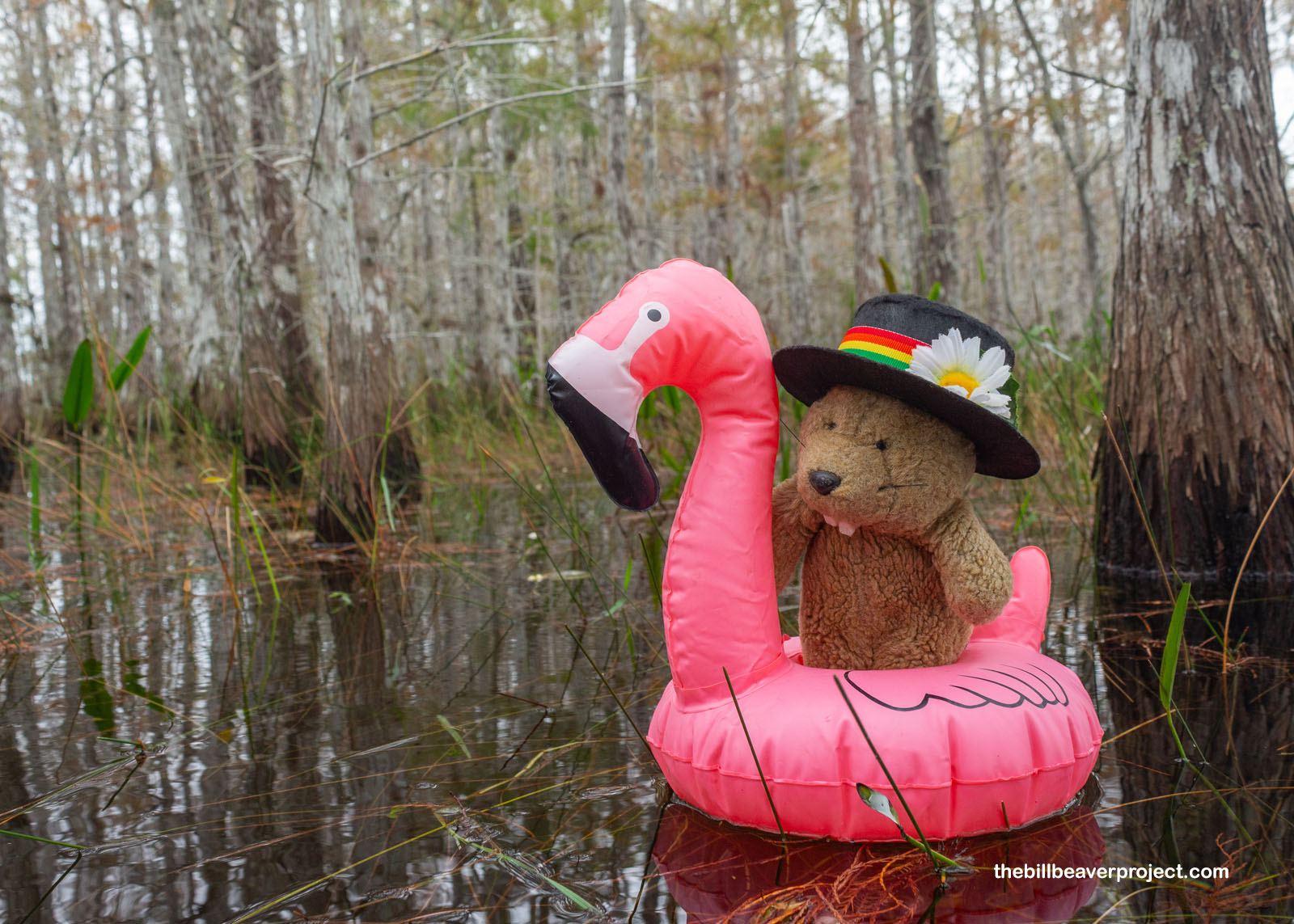 |
The area we were exploring was called a cypress dome, and it builds up around shallow ponds, especially holes dug by alligators. The trees on the edges, where it dries up faster, don’t grow as large as the ones in the wet center, giving these groves a dome shape! They’re also packed full of bromeliads, like these Tillandsia species, long threatened by over collection but now federally protected! Even though it was winter, these ones were getting ready to bloom!
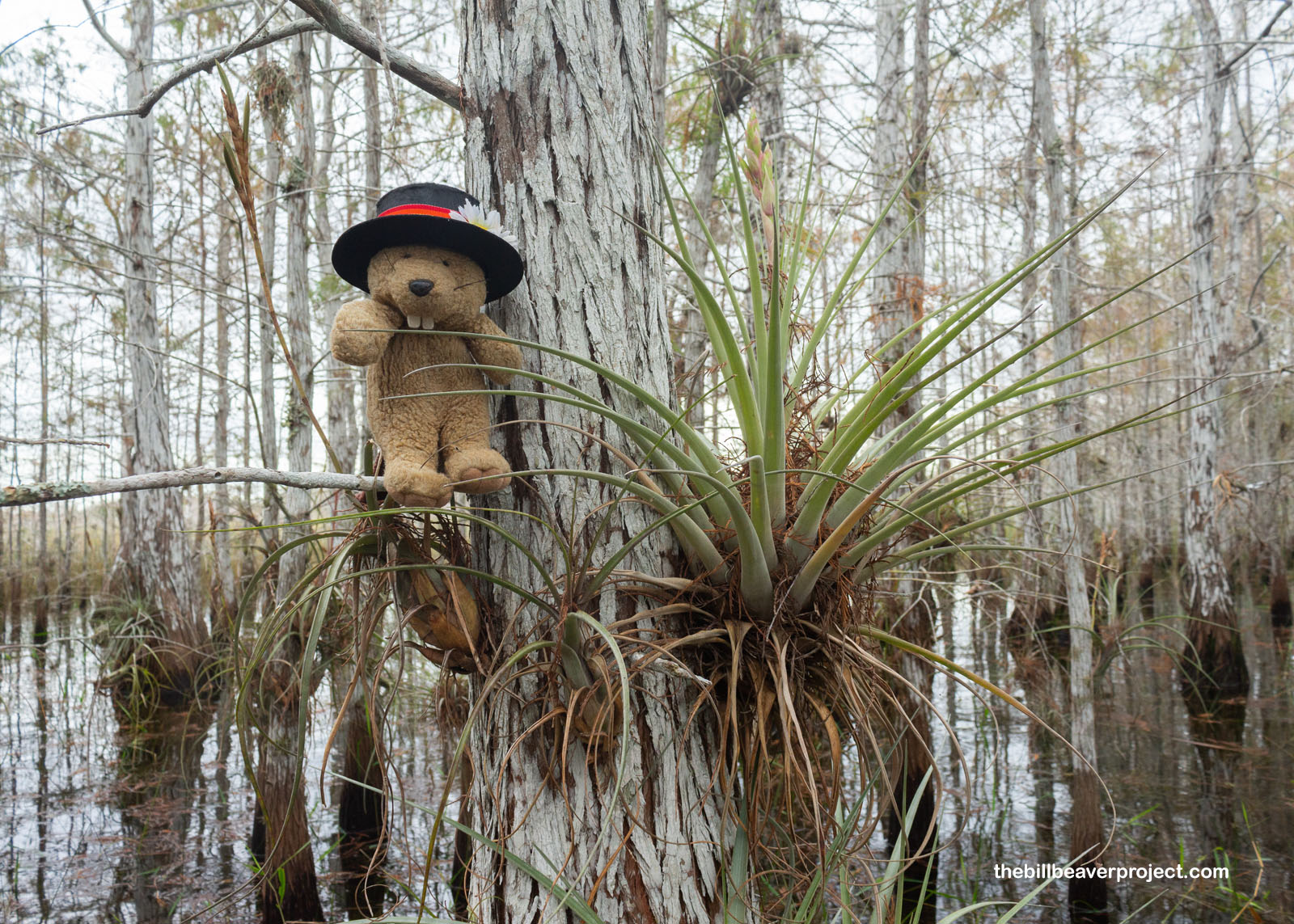 |
We wandered here for about twenty minutes before moving on to a new spot in the cypress dome, back in the direction we’d come, where the cypress were much taller, the bromeliads much larger, and the water much deeper—George was waist-deep! I was very thankful to learn, as we got further from the road, that he was a trained alligator wrangler! This was all very comforting when he suddenly spotted a huge bull alligator just up ahead!
Luckily for all involved, the alligator wanted nothing to do with us, lounging in the middle of a huge hole he, or his ancestor, had dug here. Alligators mostly eat fish, and alligator holes are great places for fish (and all kinds of animals) to survive during dry spells. Since these huge reptiles only need to eat once or twice a week, the odds are pretty good that a visit to an alligator hole won’t result in chomping, but the odds are never zero! We watched the gator for a little, admiring his grand cypress cathedral, then slogged back to the road to dry off.
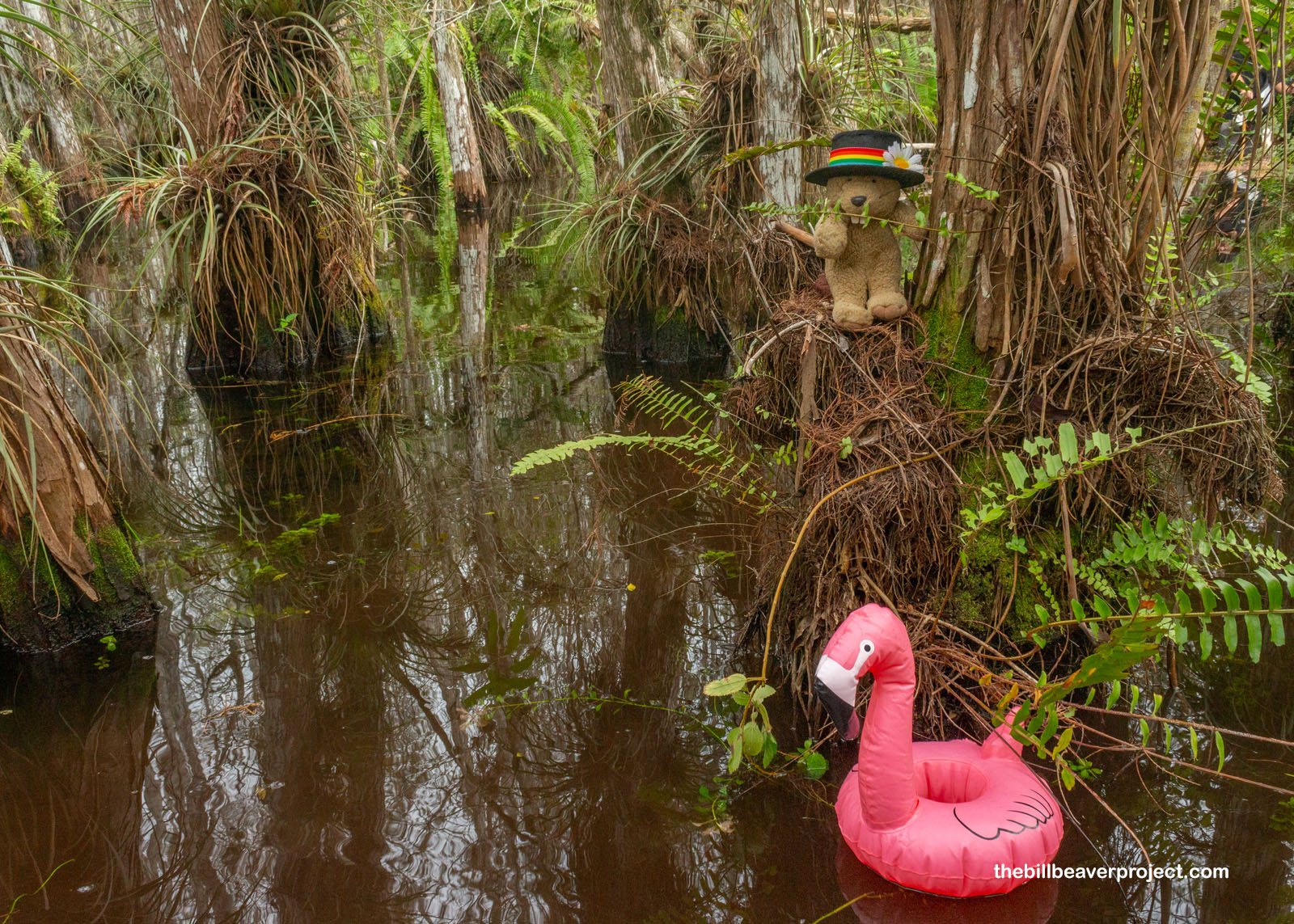 |
George had to return to the visitor center, but he gave me some recommendations for where to stop on my way south to Flamingo. Right after he drove off, I realized I still had his walkie-talkie! Already rolling south, I figured I’d return it to the visitor center on my way out. Meanwhile, my first stop was a mahogany hammock, a treasure trove of rare trees that have taken root on the high ground!
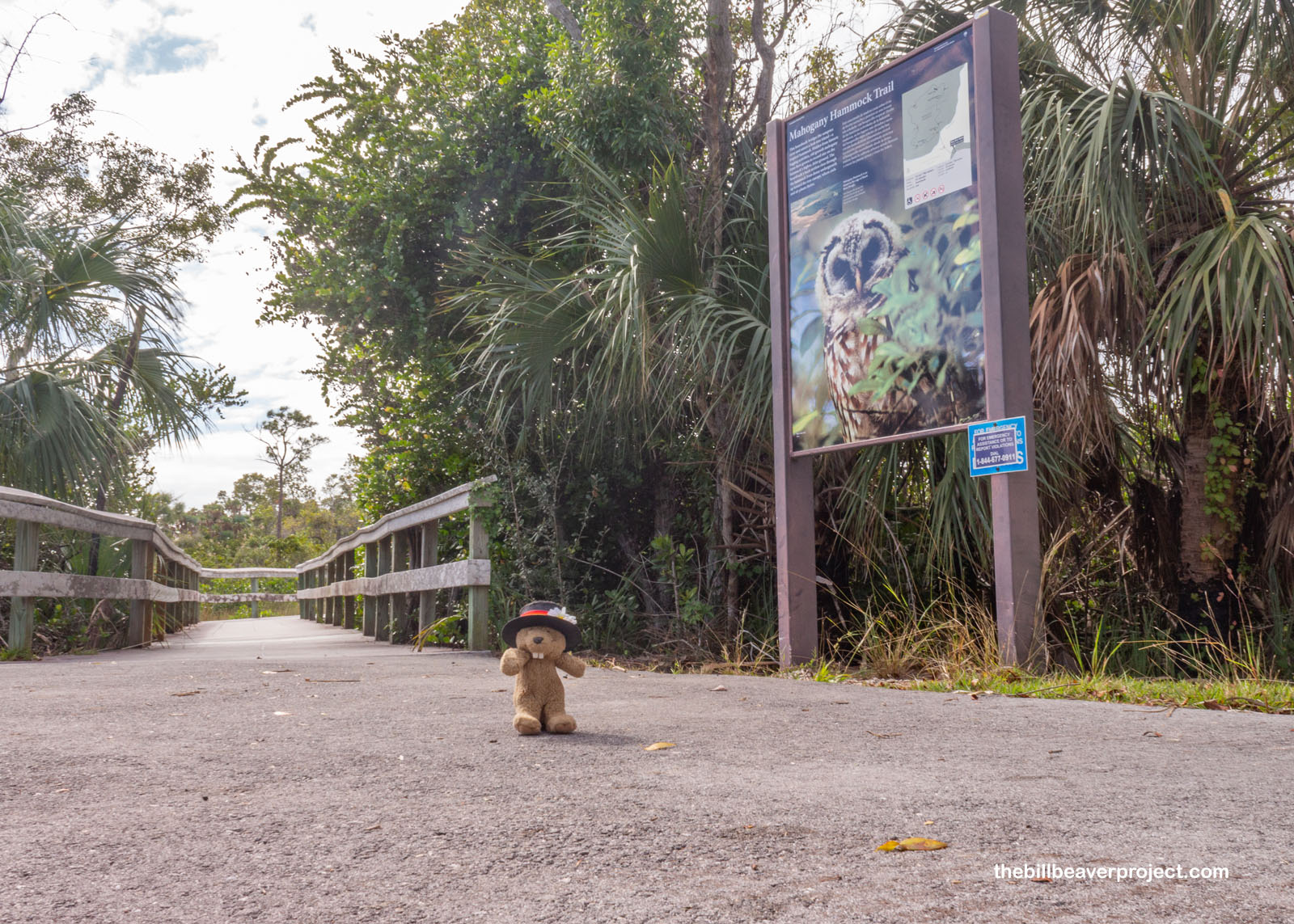 |
What makes these trees so rare? Well, loggers practically wiped out mahogany trees (Swietenia mahogani) in the Everglades and the Florida Keys! Here, though, the dense jungle of sawgrass, palms, and gumbo-limbo trees kept a small grove of mahogany trees well hidden! One of them has grown to champion tree heights after enduring hundreds of hurricane seasons!
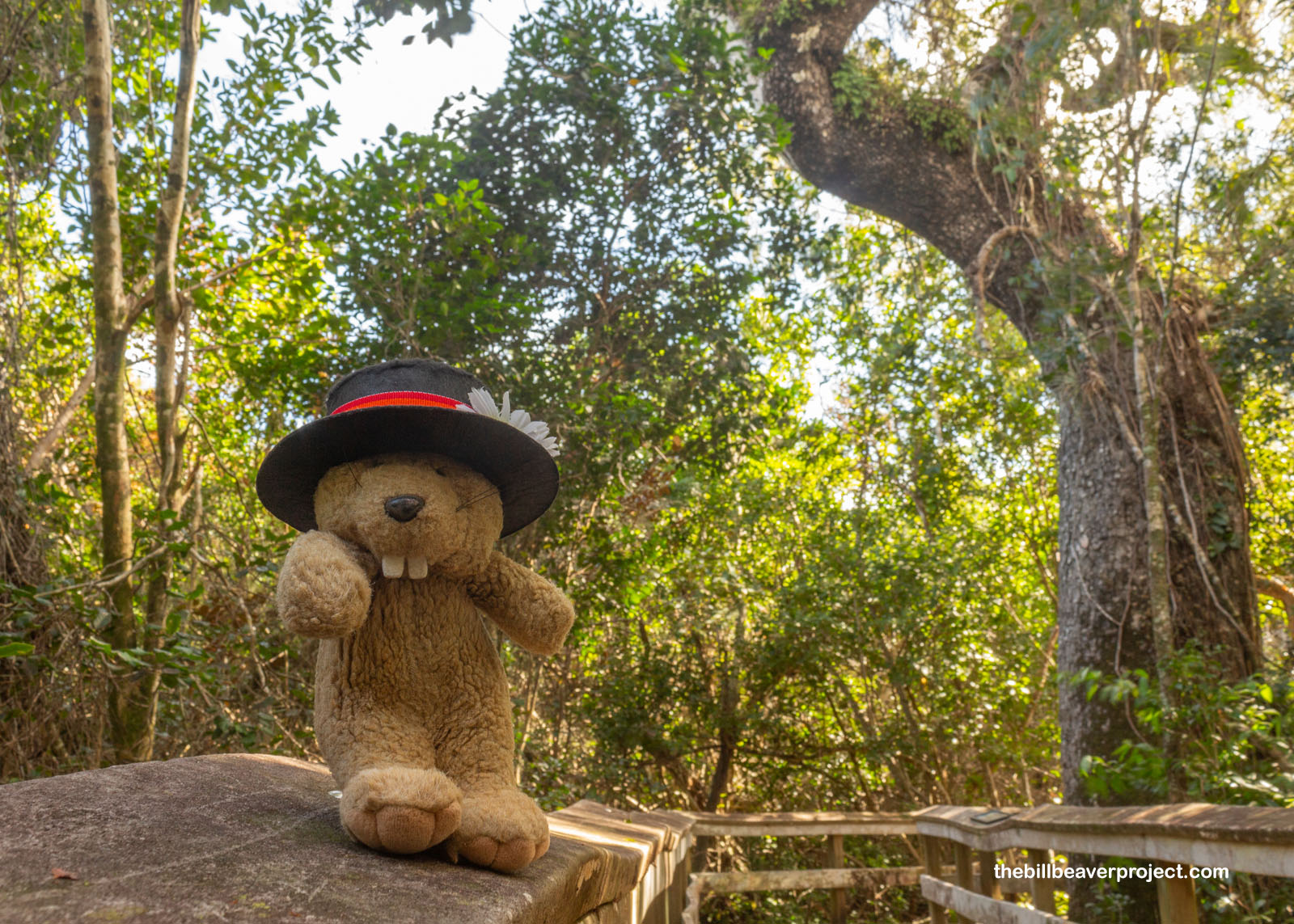 |
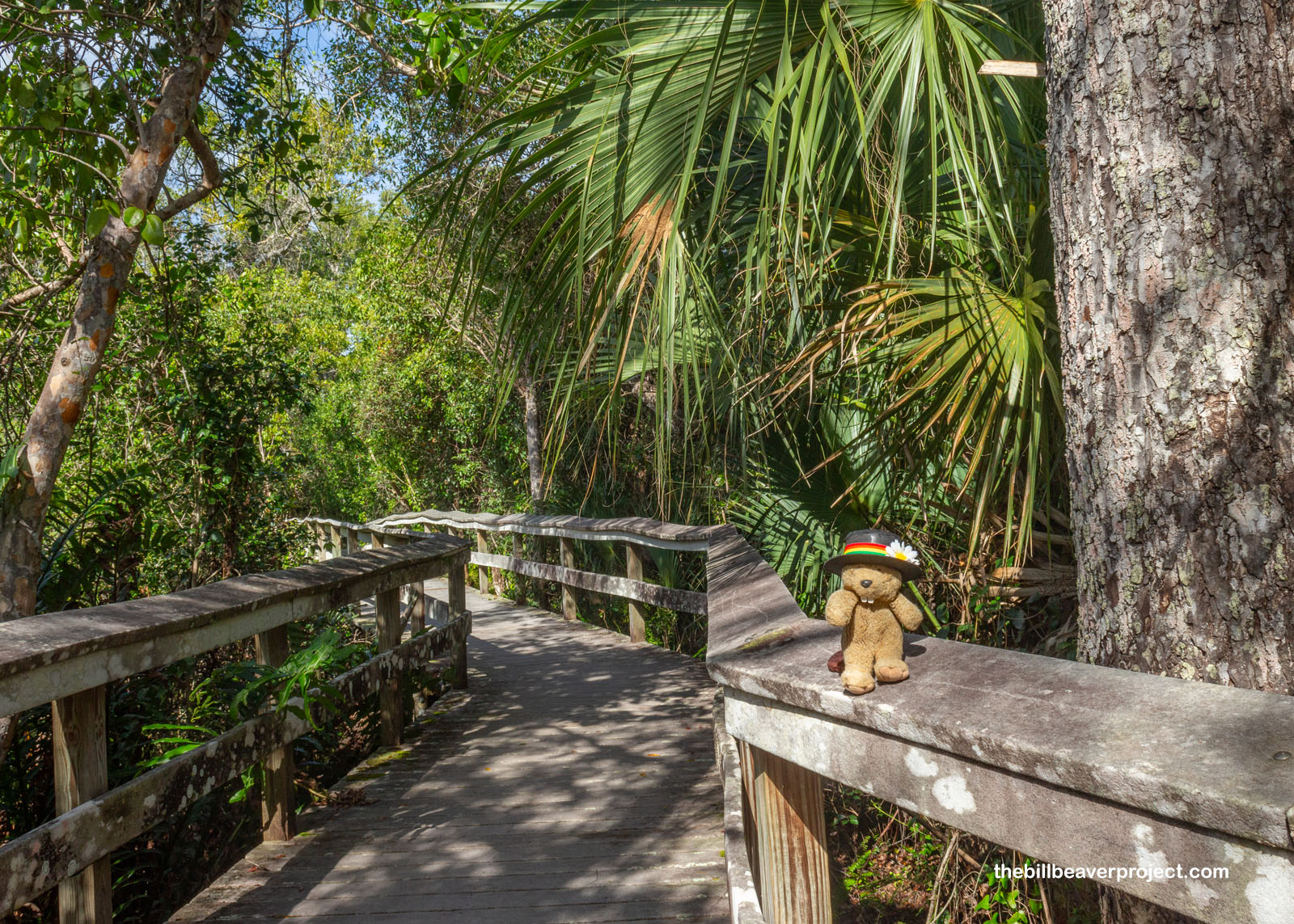 |
George had also told me to stop off at Paurotis Pond. If he hadn’t, I would have passed it right by, a backdrop for picnics and a place to paddle, but also a critical nesting site for birds like the roseate spoonbill, white ibis, and wood stork! He wanted to draw my attention here because it illustrated a topic that Florida had all but banned discussing: mangroves! Well, Florida hadn’t banned mangroves exactly, but mangroves are coastal trees that prefer brackish water. Why was inland, freshwater Paurotis Pond filling up with mangroves? Was there any connection to the streets I’d seen in Daytona Beach that had been swallowed by the ocean? If only there were a pair of scientific words that could describe these changes in the local climate…
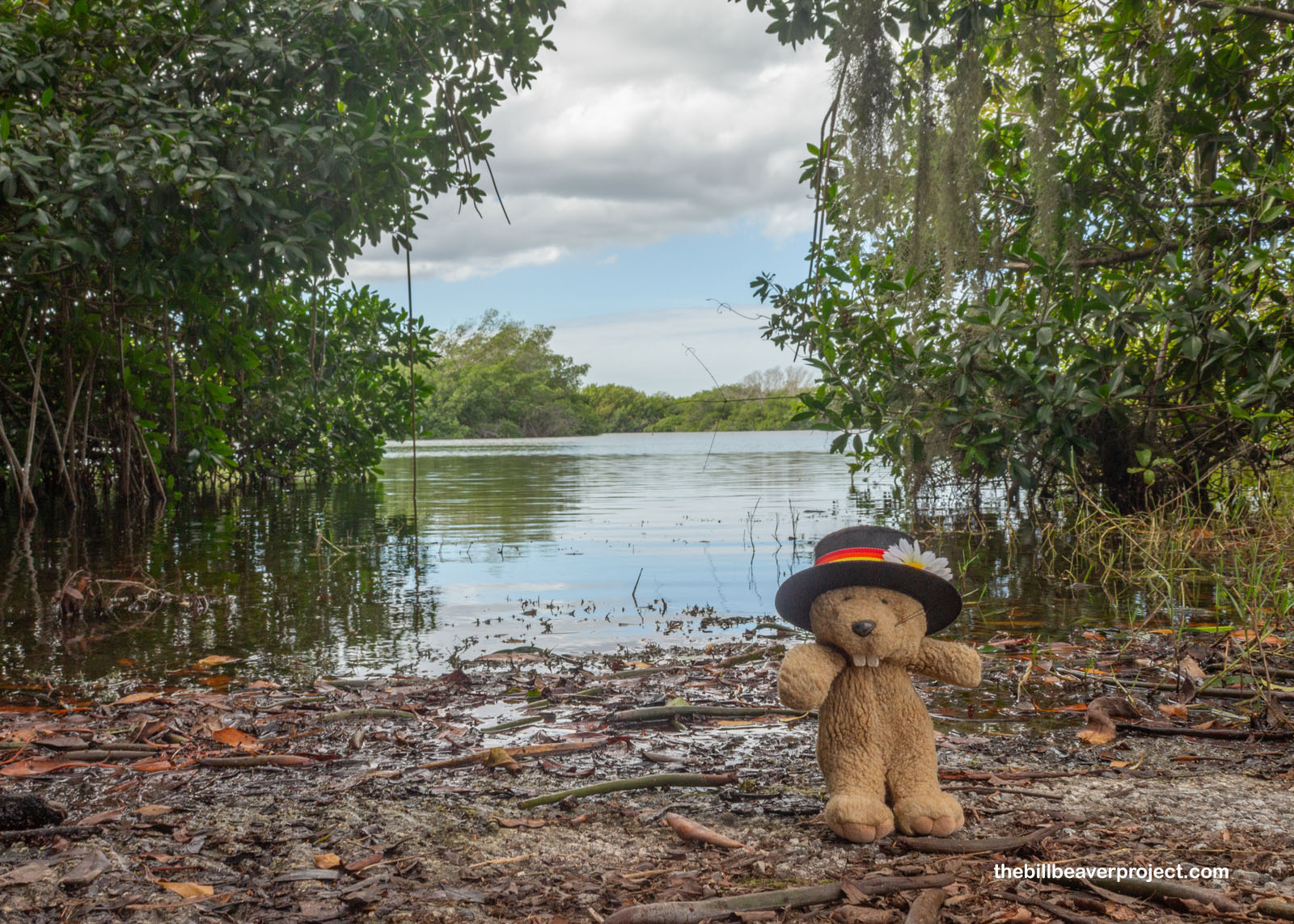 |
I concluded my foray into Everglades National Park overlooking the usual habitat of mangroves, where the Buttonwood Canal empties into Florida Bay. Here, from 1892 until the park was created, stood the village of Flamingo, named for the pink birds that stopped being abundant here after ten years. Flamingo rose and fell on speculation that there would be a railroad connecting it to Key West, but after the creation of Everglades National Park and Hurricane Wilma in 2005, little to nothing remains of the village but its name!
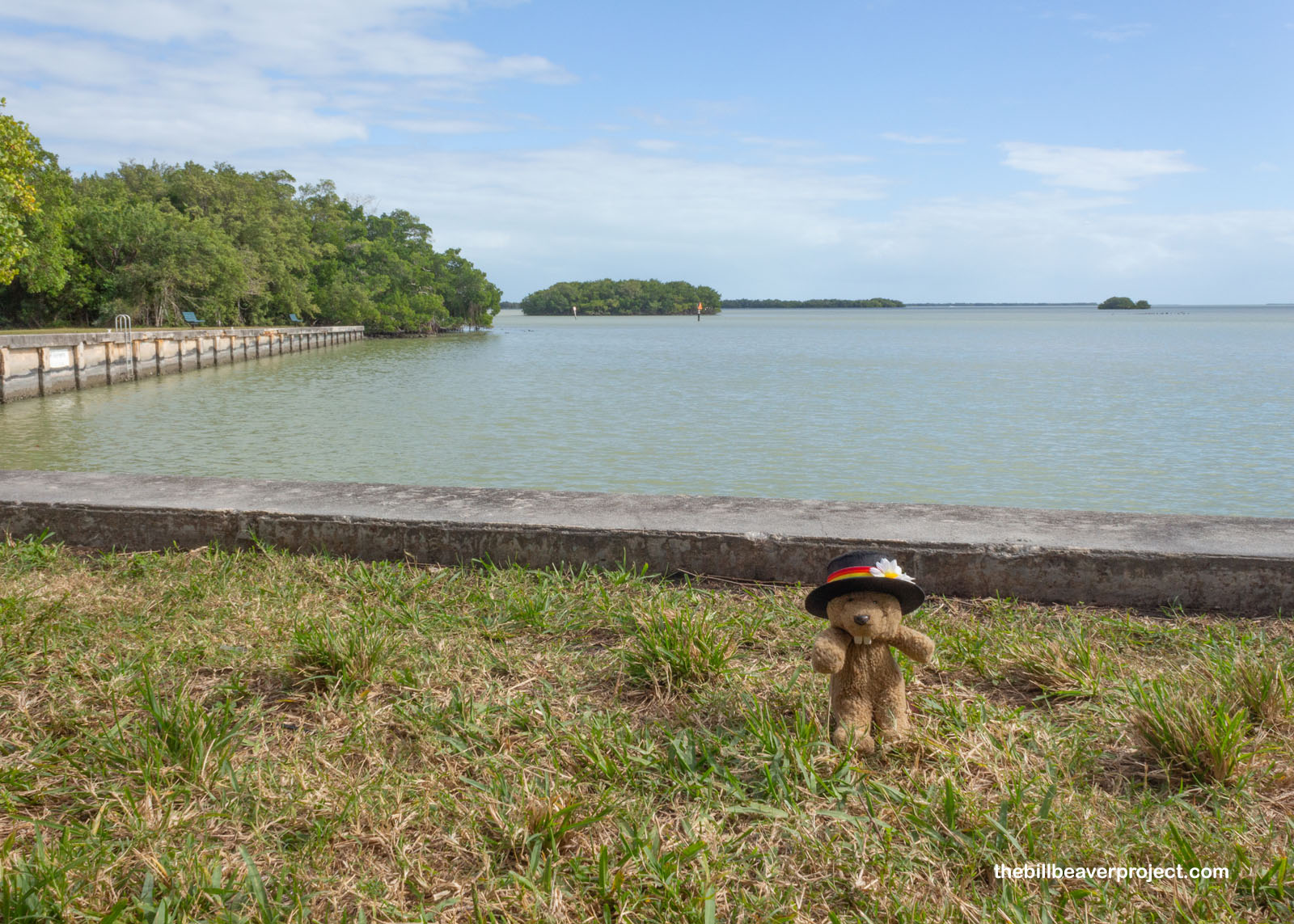 |
I meant to stay here and watch the sunset, but I had to be back to Ernest F. Coe Visitor Center to return George’s walkie-talkie by 5:00! So instead, I walked around the marina, where a bunch of folks were gathered on the dock watching something in the murky water. Suddenly, there was a spray of air and a big bulky something rose up and dipped back down, then another! And another! And a baby! The marina was full of muddy manatees, going about their day, grazing on munchies on the bottom! I wanted to dive in and say “Hello,” but George had warned me about snorkeling here: Put an arm in this water, and you might not pull it out!
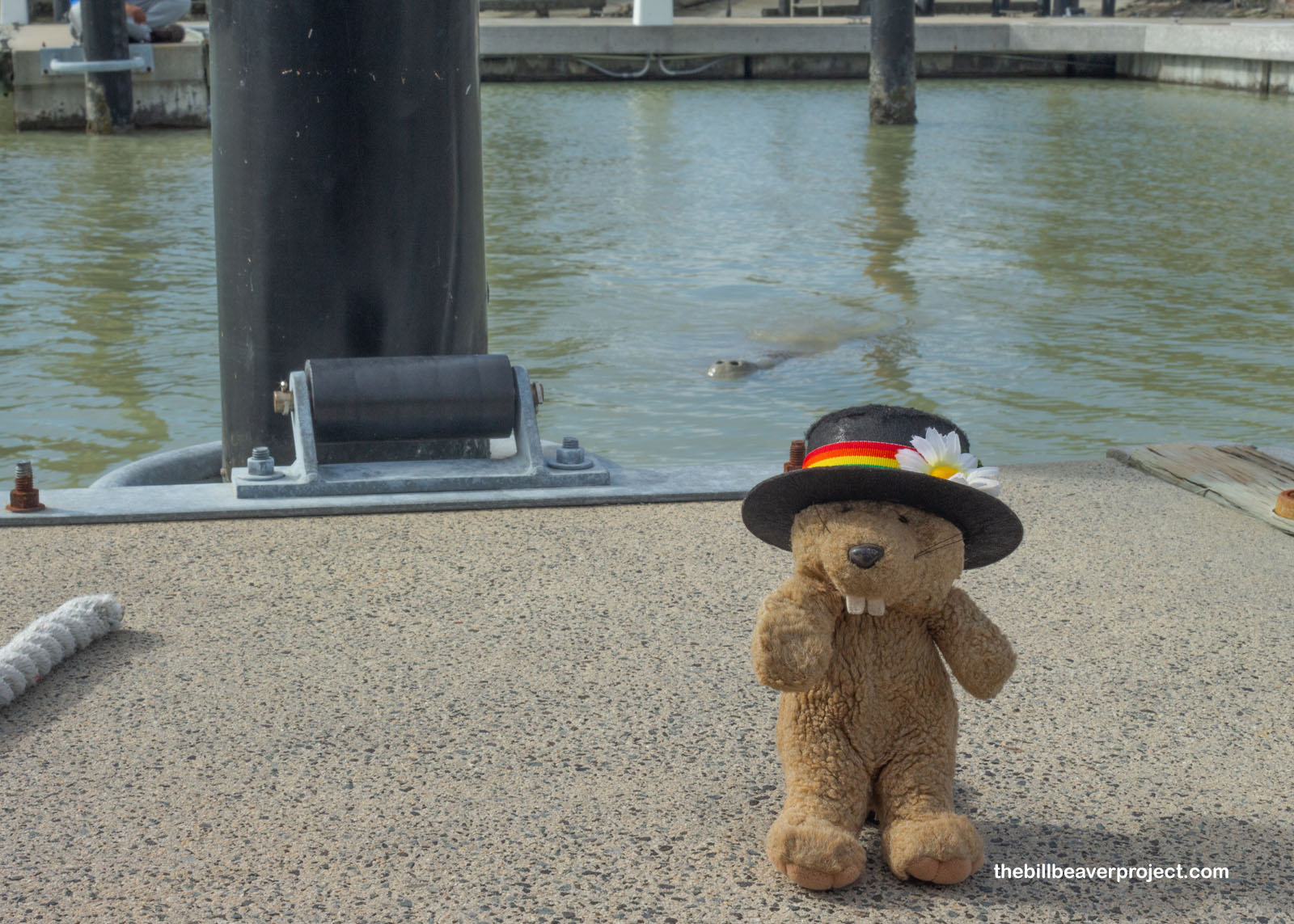 |
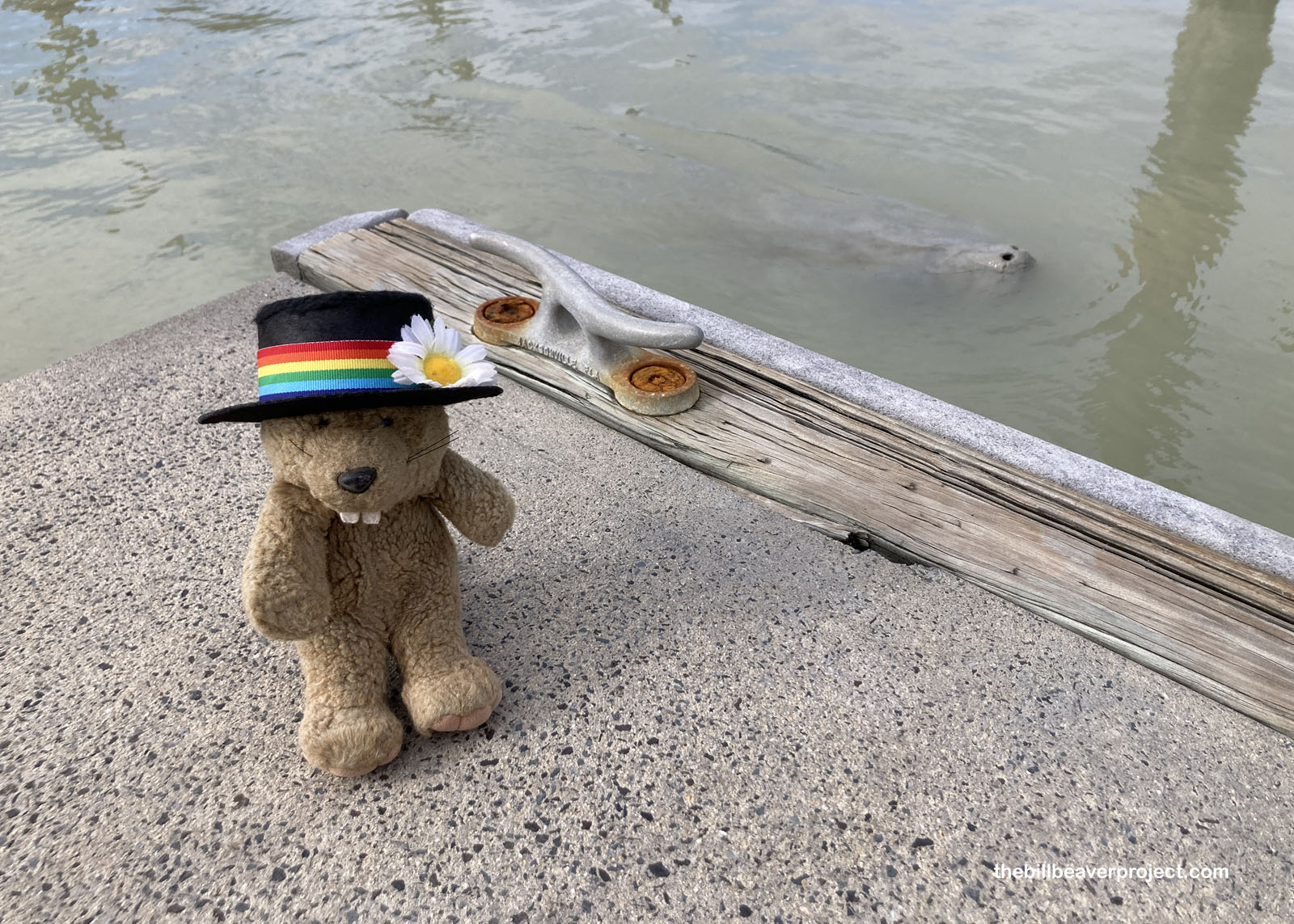 |
When I wandered over to the boat ramp, I saw exactly why he said so. There was an absolutely enormous American crocodile lounging right in the middle of the ramp! While alligators can grow up to 15 feet long, crocodiles can grow five feet longer, and this one was pushing it! These crocs hang out in the brackish water alongside bull sharks and jellyfish, so down here in Flamingo, it’s always best to keep a boat hull between you and the water. I was pretty sure my flamingo tube was not enough!
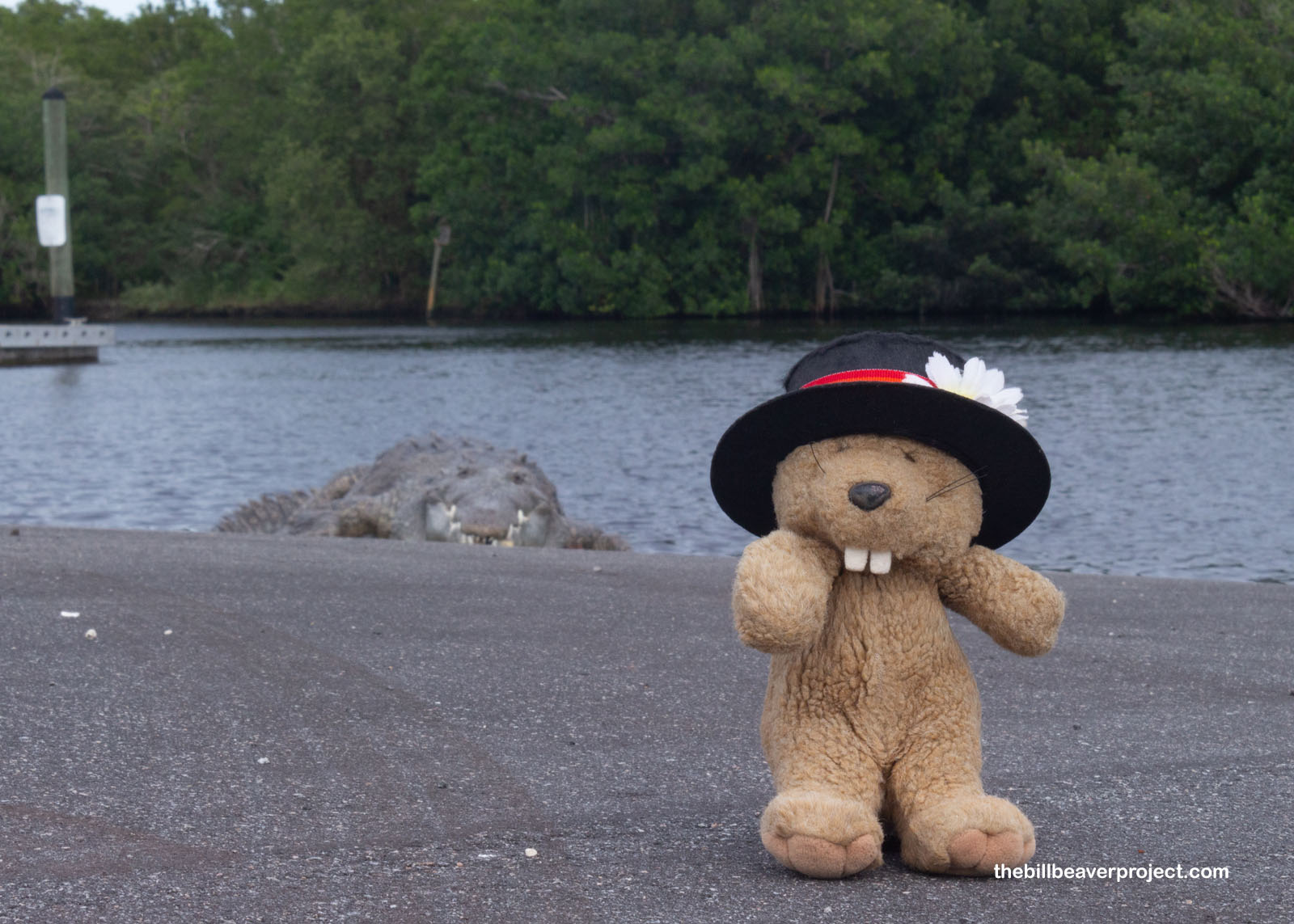 |
I wanted to maximize my time here before heading back, so I started a stroll down the Guy Bradley Trail. Guy Bradley, whose name is also on the visitor center here, was one of the country’s first game wardens, and for $35 a month, he single-handedly enforced poaching laws from the Everglades all the way to Key West! It was a very dangerous game, because bird plumes, especially from egrets, were all the rage in the fashion industry and in hot demand. Sadly, Mr. Bradley was shot, martyred even, in a confrontation with one such plume hunter on July 8, 1905. Though the poacher was acquitted, the murder made national headlines, setting off a stream of laws banning plume hunting, and the fashion industry gradually lost interest in feathered hats.
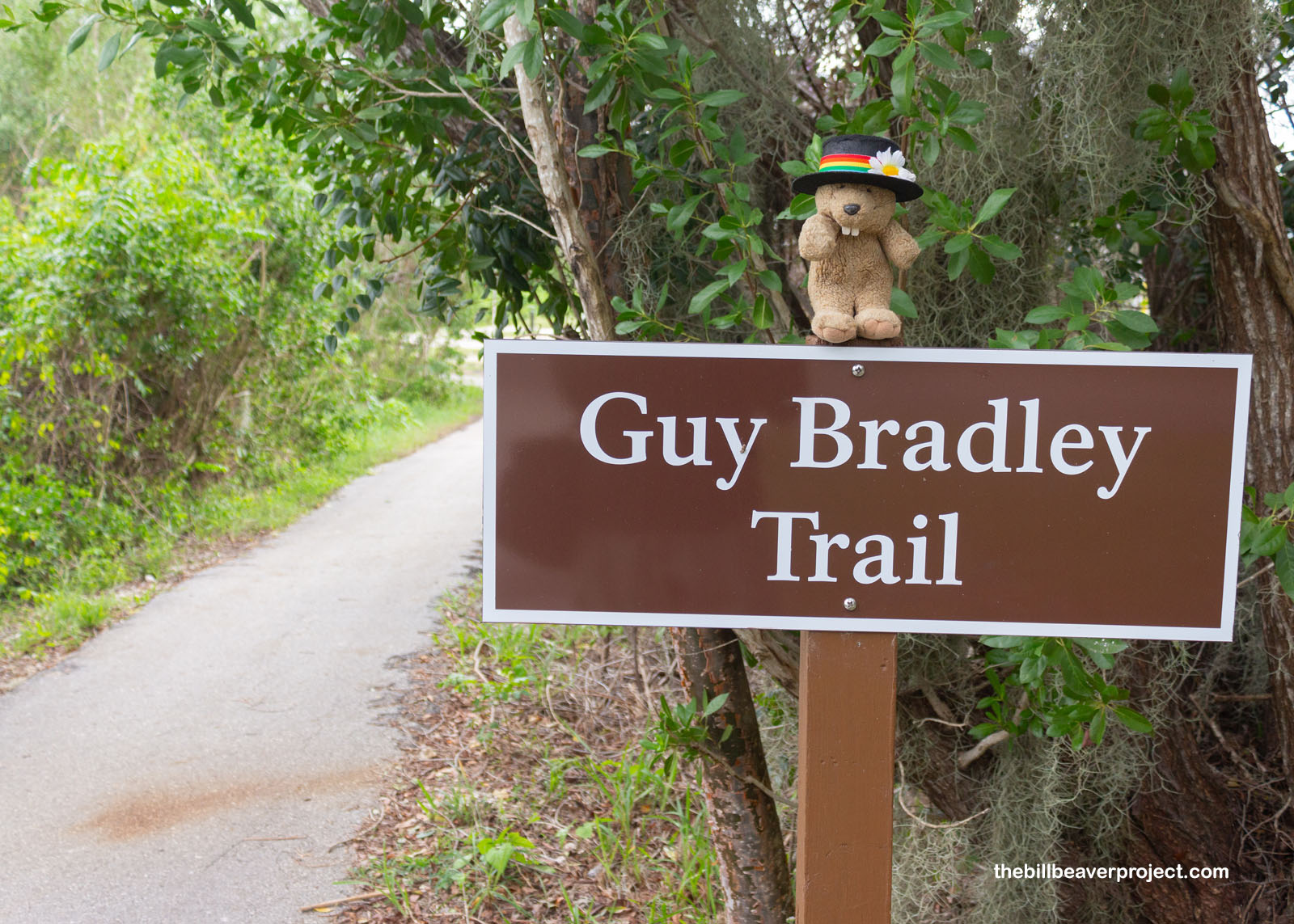 |
I didn’t make it far down Guy Bradley’s trail, because 131 years after the founding of Flamingo, this beach was still swarming with mosquitoes! They were absolutely ravenous, getting into every nook and cranny, between fingers, behind ears—they were relentless and everywhere! In short, even if I had time to stay and watch the sunset, I had no interest in getting sucked dry like a Capri Sun! So I made a hasty retreat, giving me enough time to successfully return George’s walkie-talkie on my way out.
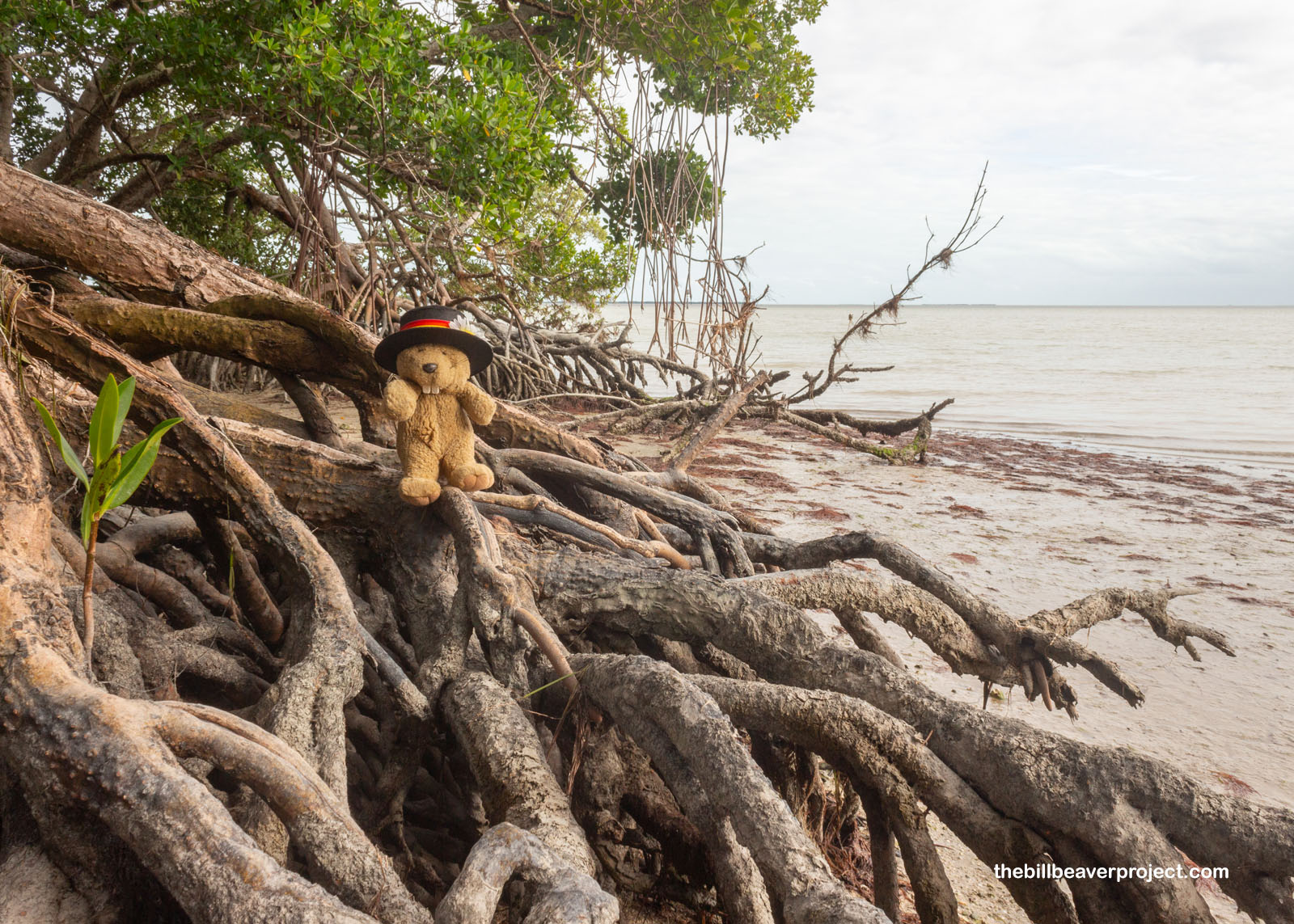 |
From there, I sought out a place that was as unfriendly to mosquitoes as could be, and the southernmost purple martin house in the continental USA was just the place to shelter. Purple martins aren’t usually awake at the same time mosquitoes are abundant, but I’m sure they would not pass up the opportunity for a pesky snack. Speaking of snacks, this big birdhouse was right next to the perfect spot to grab one of my own!
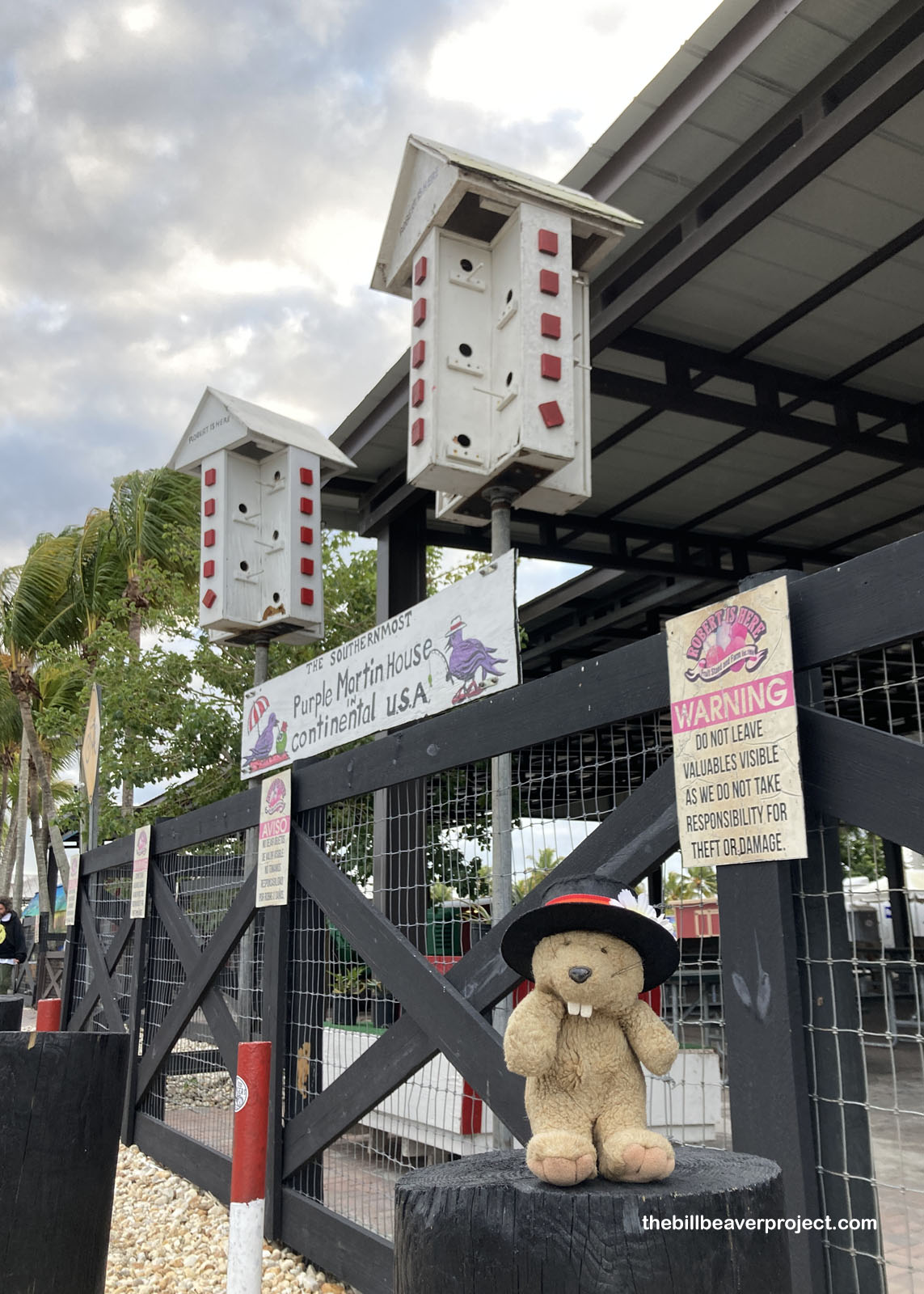 |
That, of course, was the Robert Is Here fruit stand, a Homestead favorite since 1959! It’s listed on the National Culinary Heritage Register, a tasty counterpart to the National Register of Historic Places, which tracks places past and present that have had a big impact on the American food scene. This was supposed to be a great place to sample hard-to-find tropical fruits, and I could think of no better way to wrap up my soggy Solstice adventure!
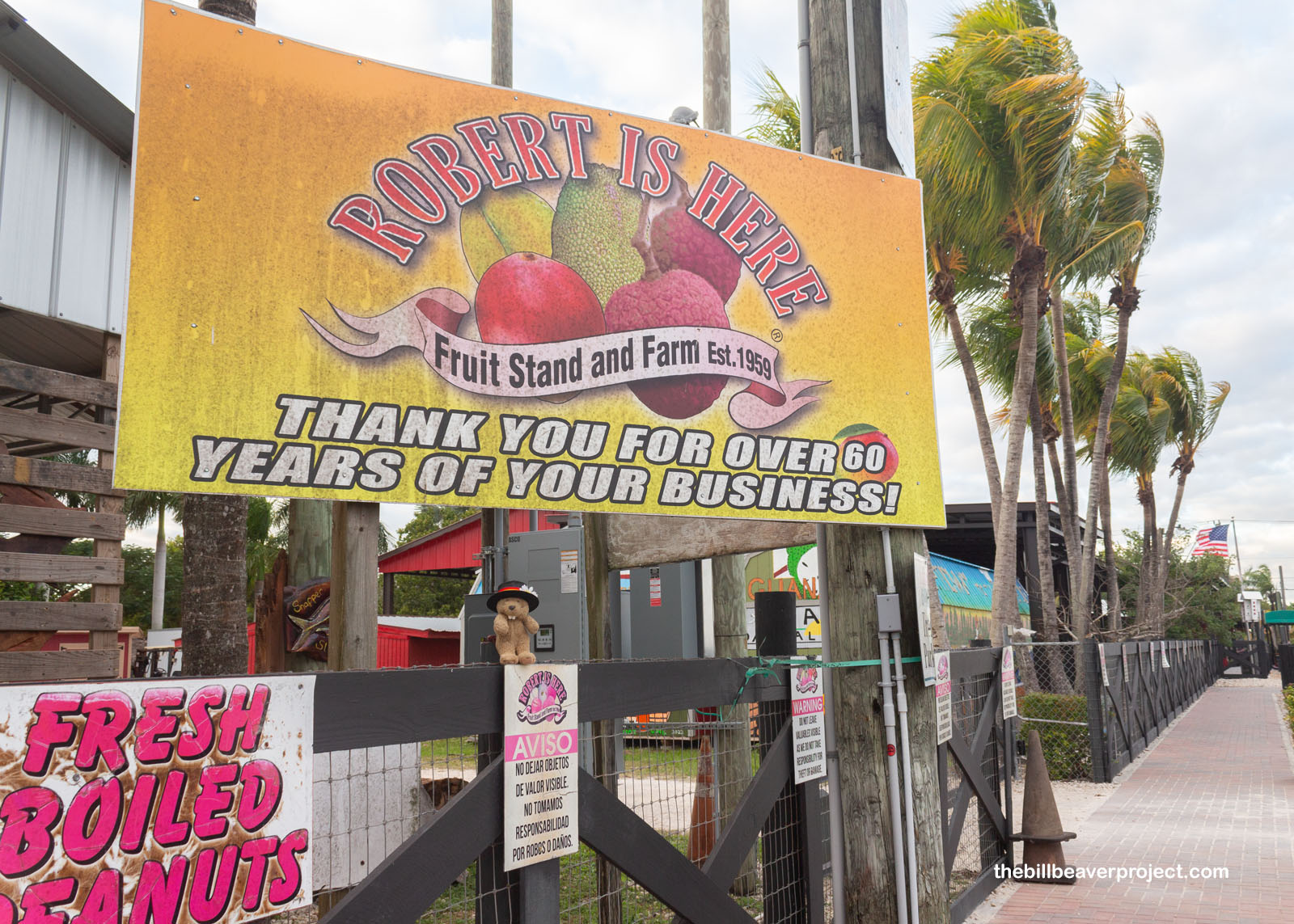 |
Why is this place called “Robert Is Here?” Well, that’s the sign that drew travelers to 7-year old Robert Moehling, seated at a table covered with cucumbers in 1959! After two years selling cukes, he had enough money to hire an employee, and by the time he was 14, he had made enough to buy a few acres of land to plant mangoes! He built a giant market ten years later and lost it all to Hurricane Andrew in 1992, but this plucky purveyor of produce rebuilt his enterprise into a true tourist destination: fruit market, playground, petting zoo, and event space!
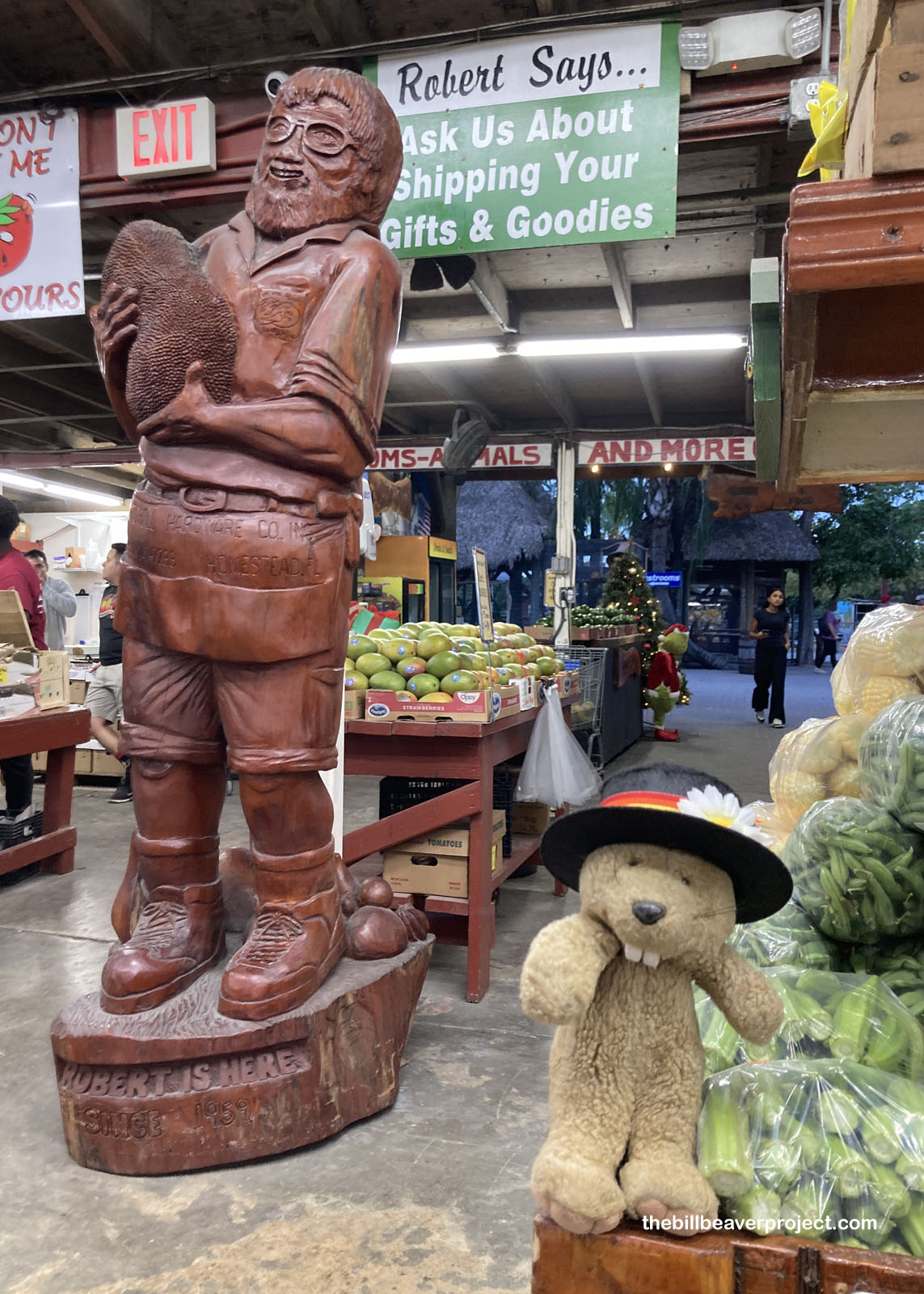 |
And what a selection! Beyond all the familiar tomatoes, bananas, oranges, and passion fruits, there were much more exotic options to choose from, like the mamey sapote (Pouteria sapota), a Central American fruit that looks like a yam and tastes like strawberry cheesecake! I picked up a different Central American fruit called a canistel, or egg fruit (Pouteria campechiana), and took it back to the hotel. I did not follow instructions! When ripe, canisters are supposed to taste like egg custard, but this one was not ripe and tasted like sawdust. Oh well, I’d also picked up a tamarind milkshake, which was the perfect finish for Solstice.
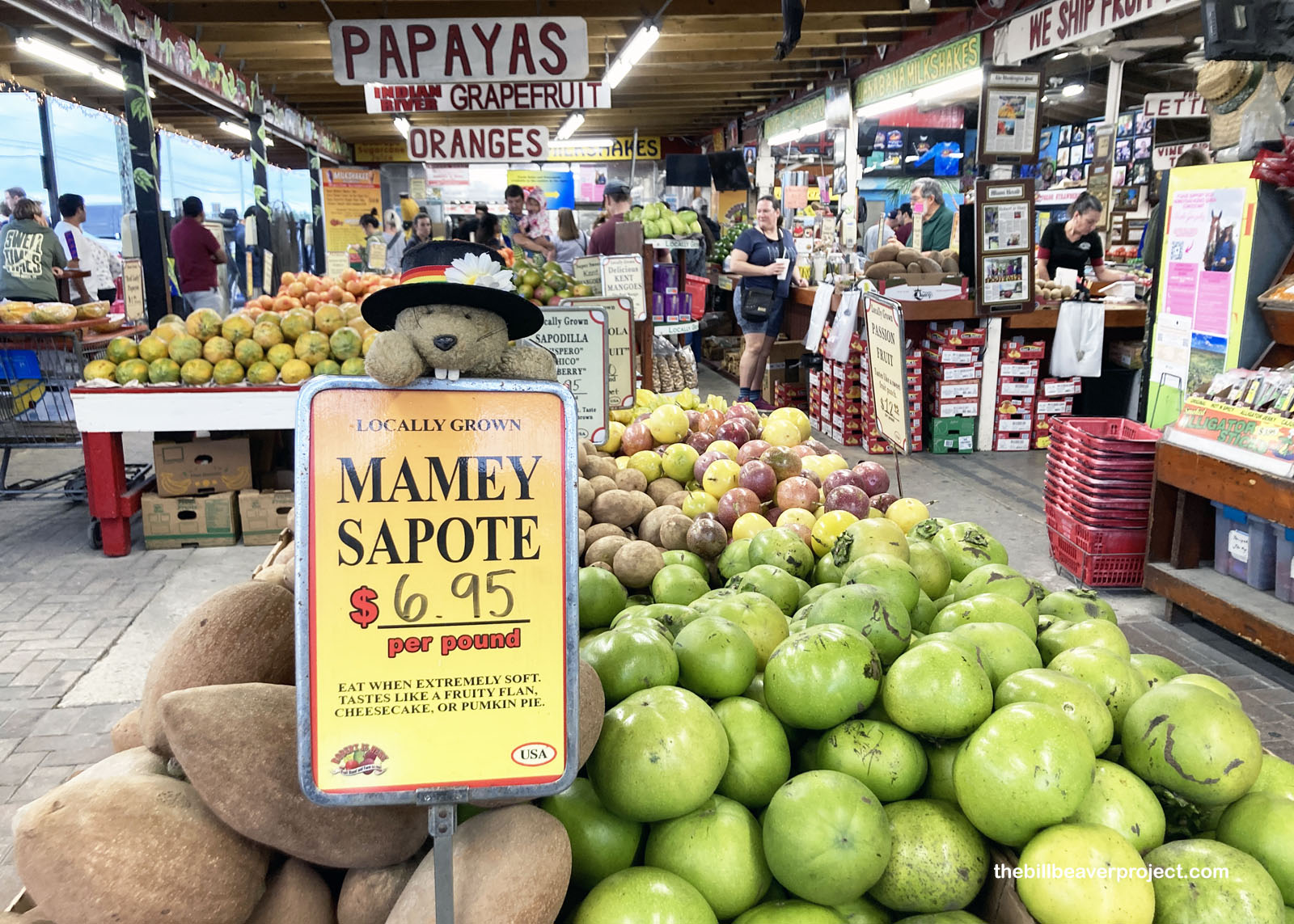 |
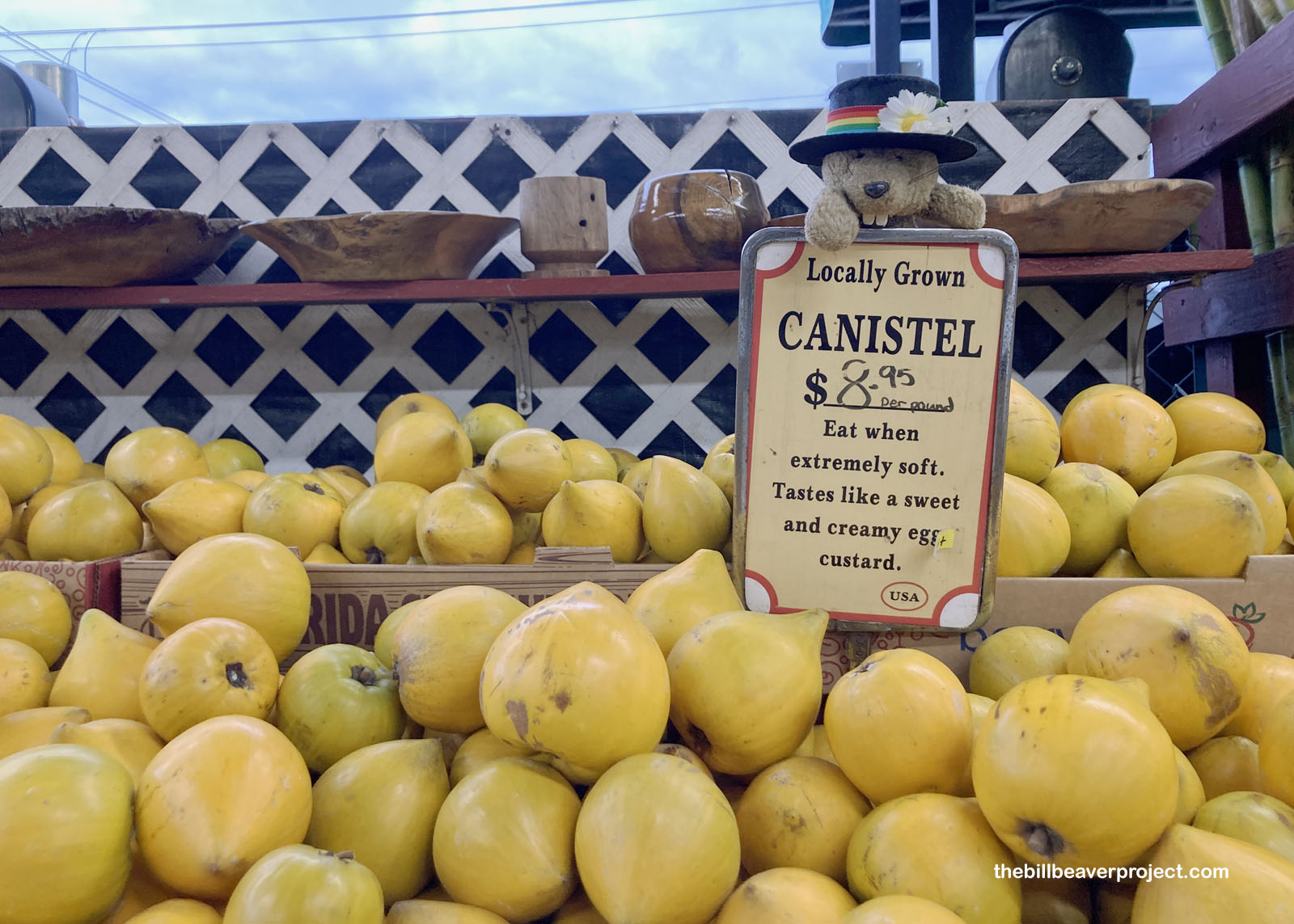 |
As usual, I’ve crammed a lot into not a lot of time, both on this shortest day and this Florida visit at large! With the sun setting and my list of Sunshine State national parks complete, I set to planning how to spend a spare day in greater Miami. I have yet to experience one of the famous airboat rides here, and I just might take George’s recommendation to visit one that’s run by the Miccosukee tribe. Time to rest up, sort through some photos, and prepare for my last adventure day of 2023!
Tomorrow’s a brighter day!

 Previous Day |
Total Ground Covered: 547.9 mi (881.7 km) |
 Next Day |
